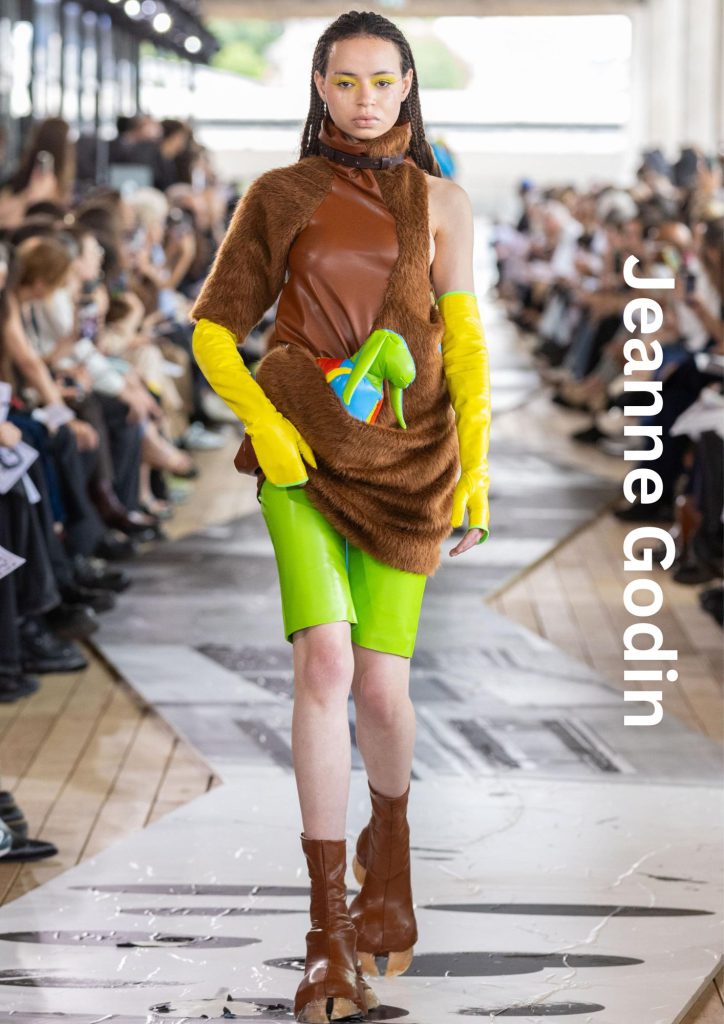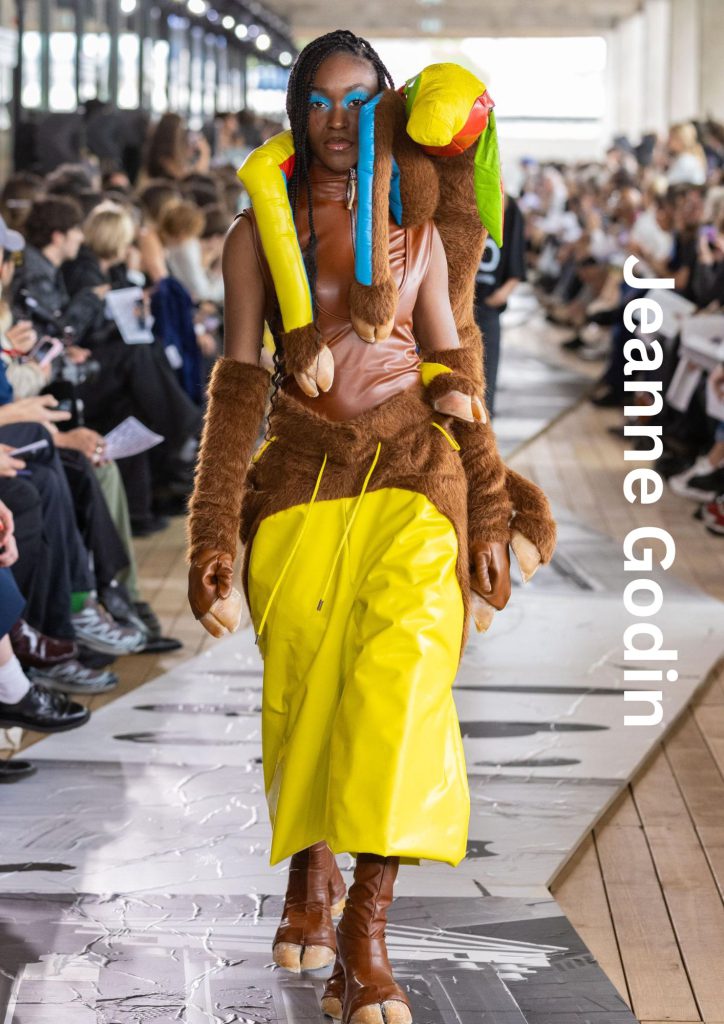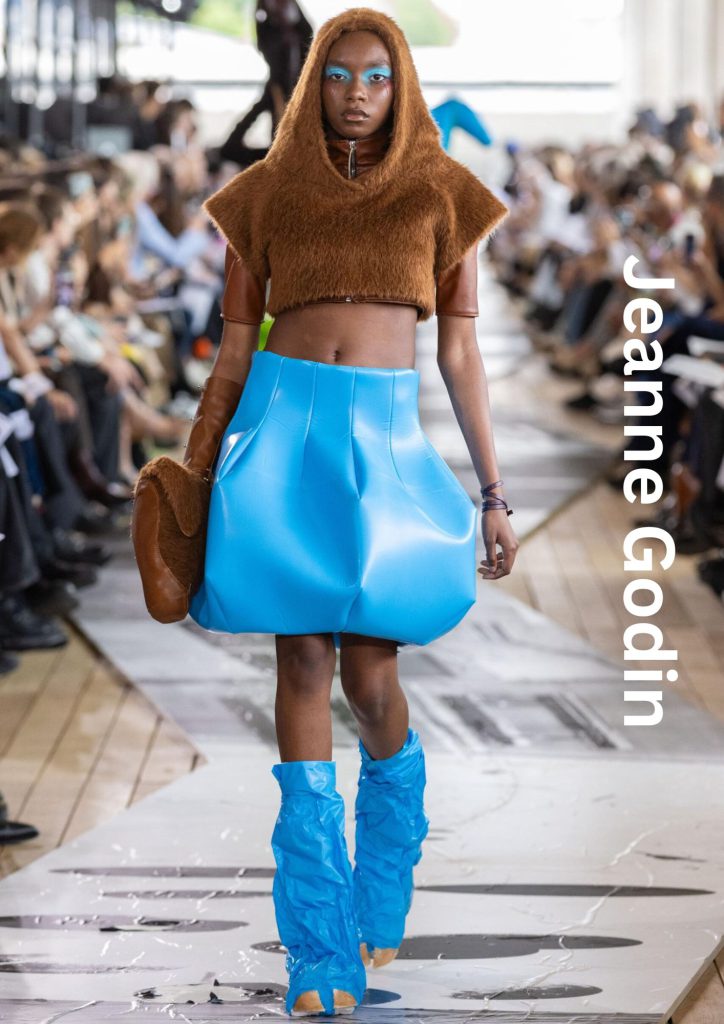The Institut Français de la Mode (IFM) Bachelor of Arts in Fashion Design Graduate Fashion Show 2024, which traditionally opens Paris Fashion Week Men's, was a standout event that showcased a mature, technically rigorous, and deeply personal vision from the next generation of Parisian designers. The show, featuring 31 collections selected from the final-year cohort, was defined by an exceptional blend of couture-level craftsmanship and a thoughtful engagement with contemporary social and industry challenges.
The overarching sentiment of the 2024 graduate show was a decisive shift from purely abstract concepts to an emphasis on wearability, mobility, and real-world relevance. Designers actively sought to create garments that could move with the wearer and integrate into a modern wardrobe, while maintaining a high level of technical artistry—a direct nod to IFM's heritage, which is linked to the École de la Chambre Syndicale de la Couture Parisienne.
Resourceful Sustainability: Financial and environmental constraints were embraced as creative challenges. Many designers incorporated found objects, recycled, or deadstock materials into their work. This included using unconventional items like air chambers from old tires, repurposed fabrics from resale sites, and recycled blinds, demonstrating a commitment to responsible creation.
Personal and Societal Narratives: The collections were vehicles for deep personal introspection and political commentary. Themes ranged from familial dynamics and personal heritage to the anxieties of modern life and social issues. A powerful moment was the unified protest by the designers and models, who walked the finale hand-in-hand wearing "Ceasefire Now" t-shirts, injecting a potent political message into the evening.
Distortion and Imperfection: Several collections explored themes of distortion—either in time, perception, or volume—embracing "mistakes" made in everyday life as a source of playful design. This translated into intentionally awkward volumes, unexpected layering, and a fusion of contradictory elements.
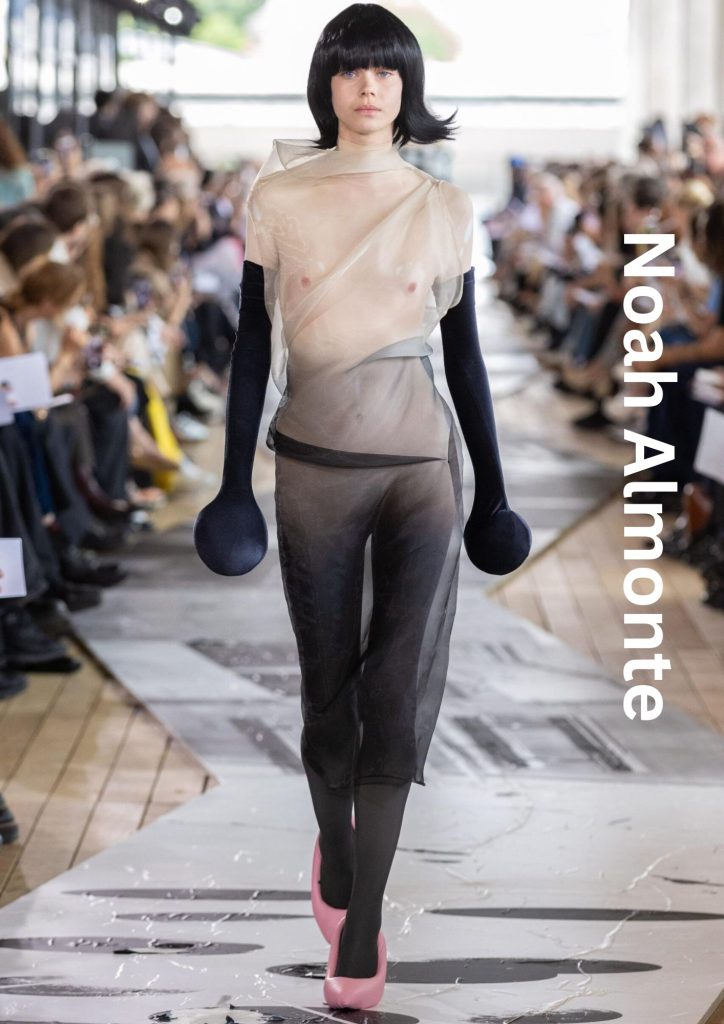
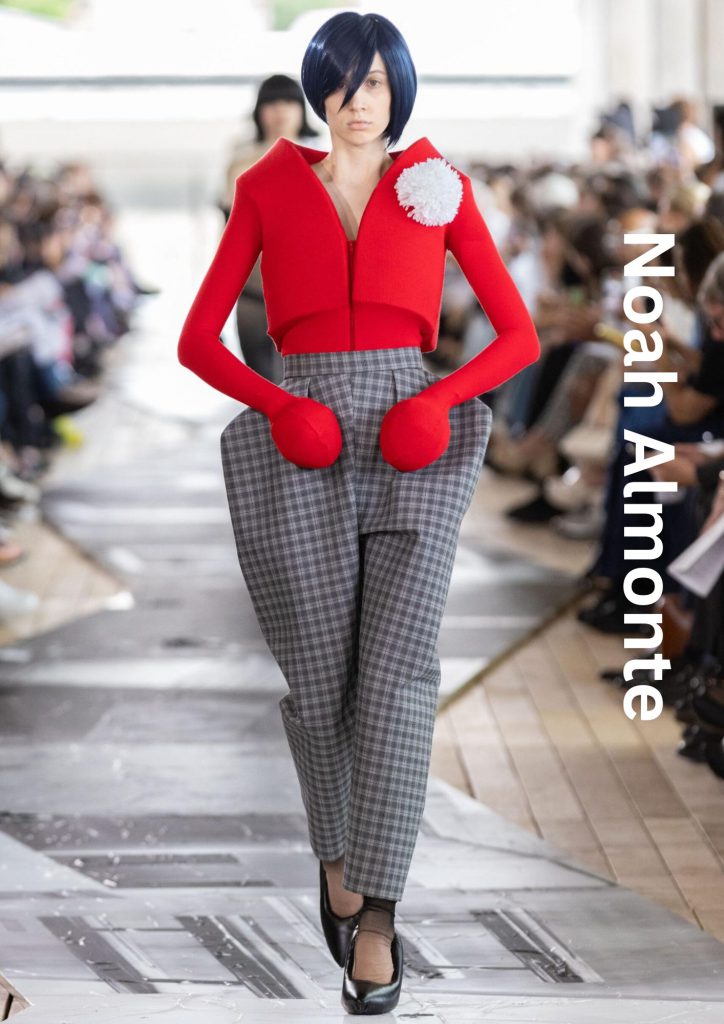
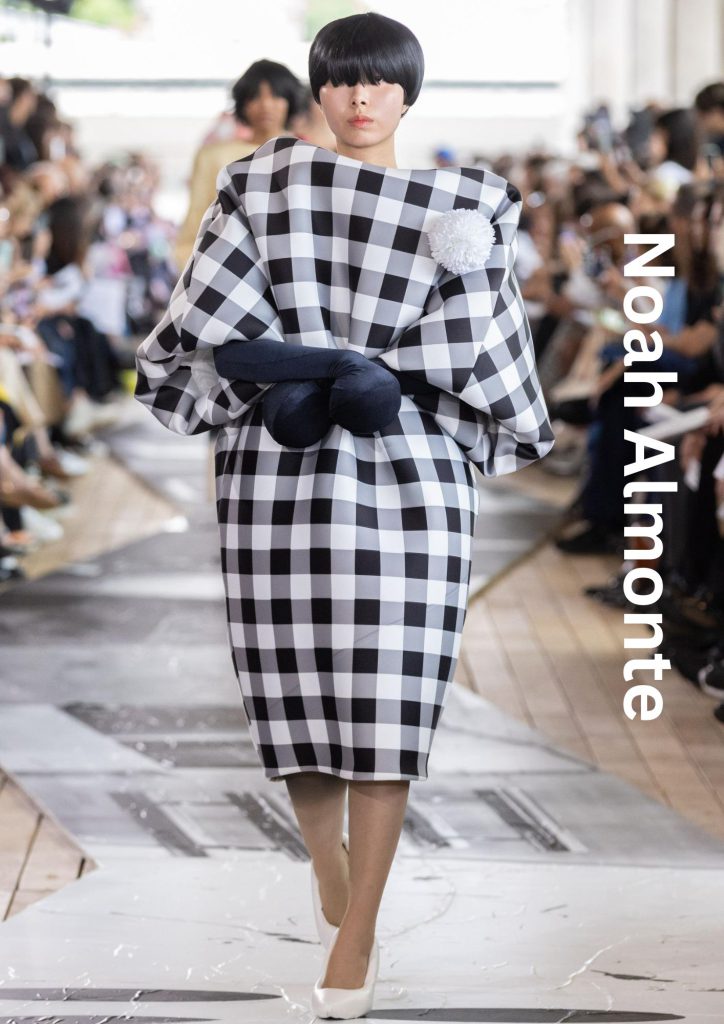
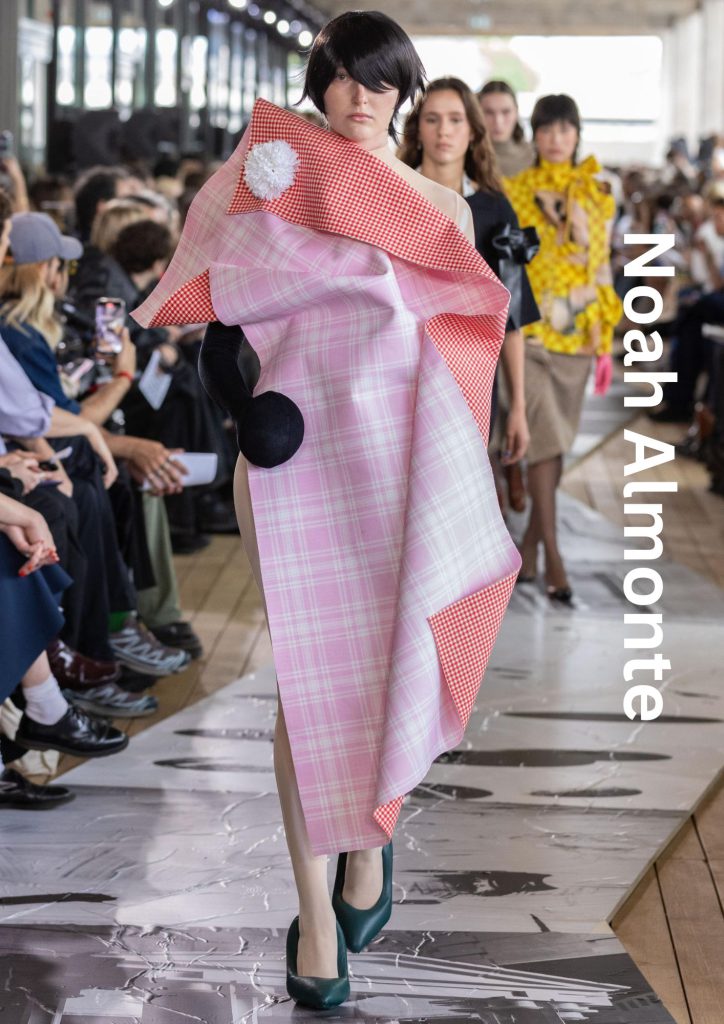
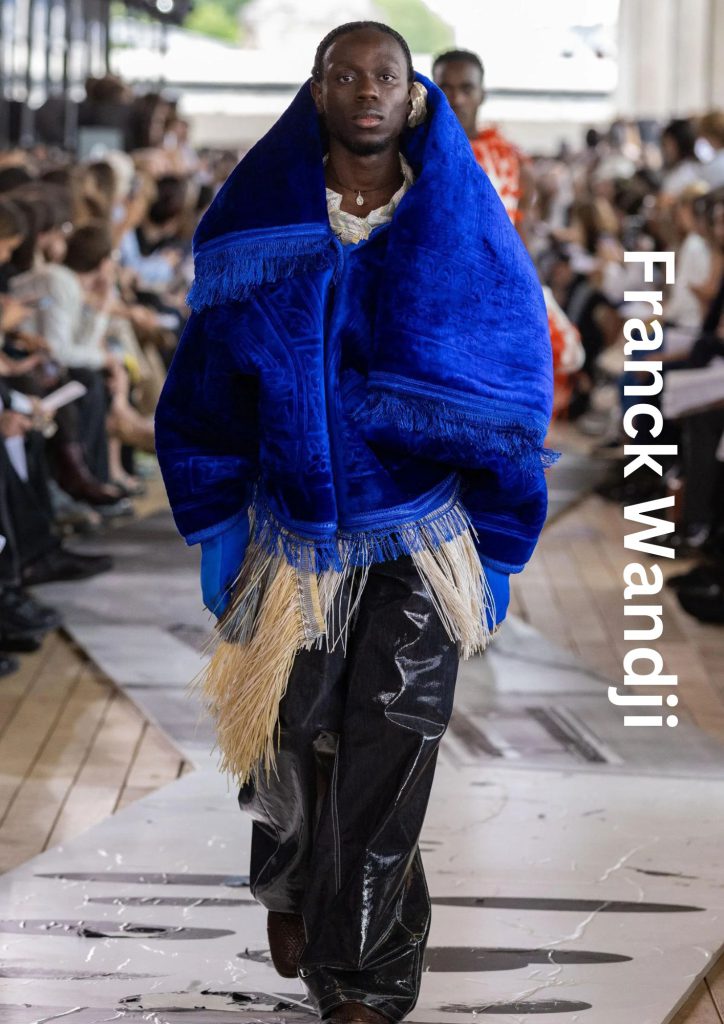
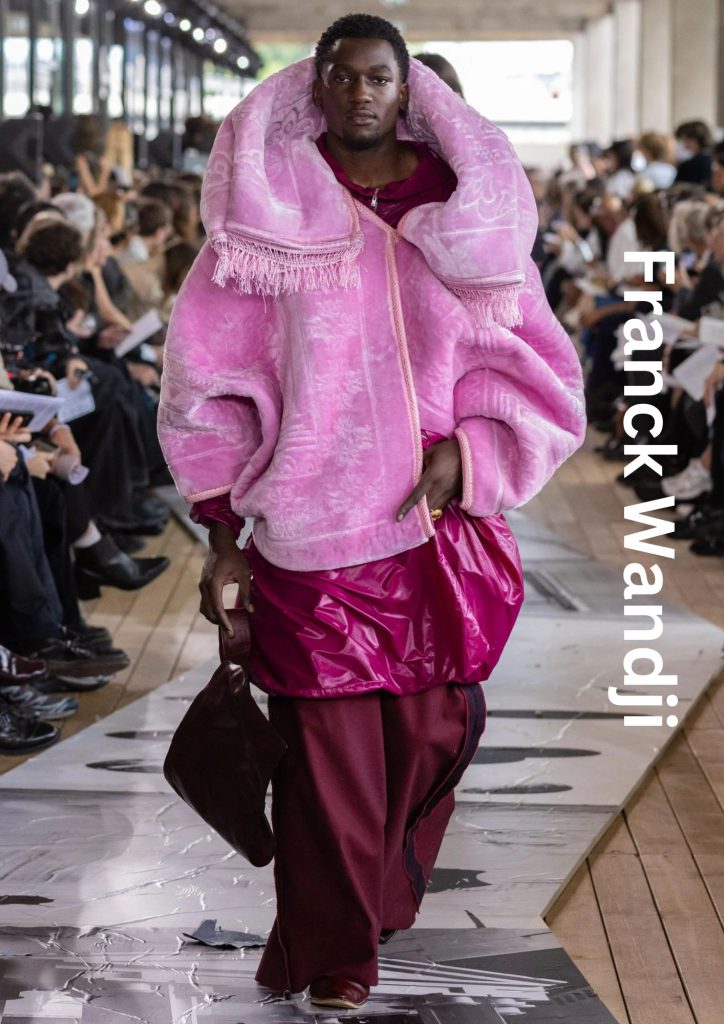
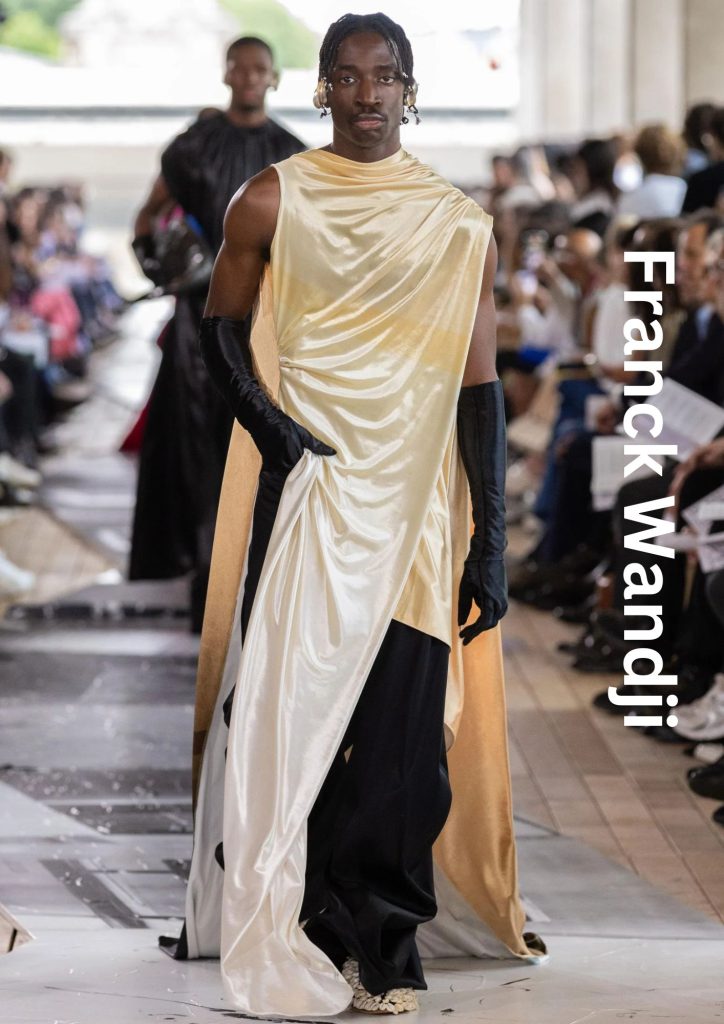
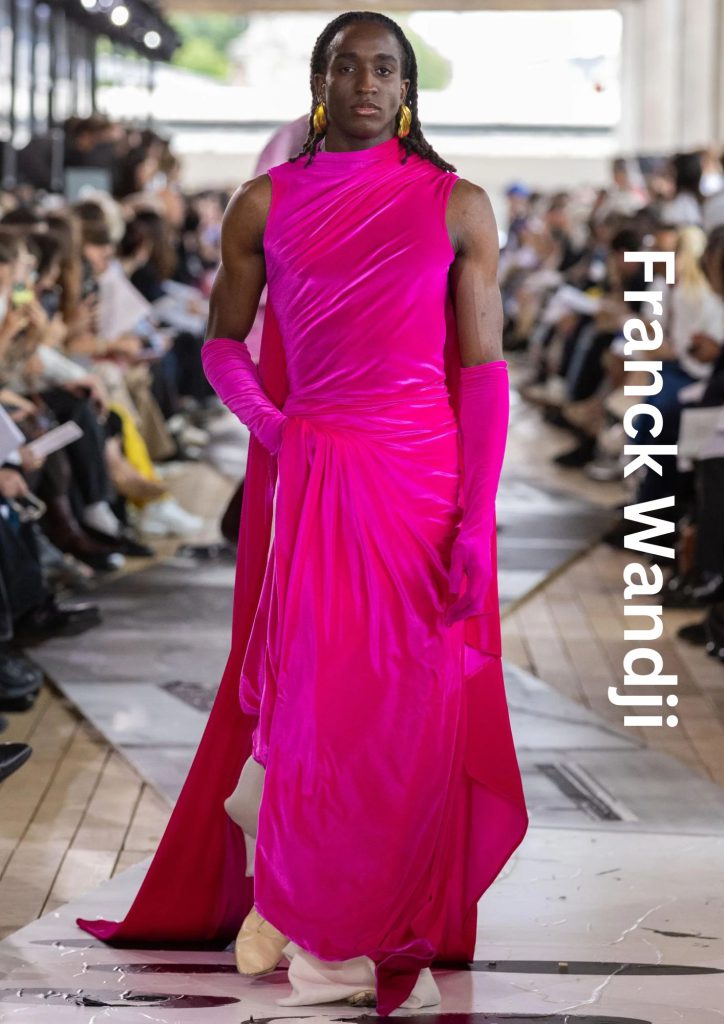
ZOE LUBKEN
Unleased during night life – the true and authentic self that emerges when we are able to let loose far from social constraints,” they say. You may think they are strange, but they exist to embrace the strange. They embrace themselves to the fullest. “For this collection, I drew inspiration from the crazy creatures of the night that I have encountered, and all that they have taught me,” they add. Zoe chose this theme, because the monsters encapsulate their chaotic tendencies. “I decided to reclaim all the things I was shamed for and turn them into my signature club bizarre trademarks. Wrinkled dirt coated clothes left at the back of the club became my fabric treatment, coming sweaty out of the club became a “sweat” scotch sweater, the t shirt that I would wear upside down gave me inspiration for the giant custom clothing tags, having to walk out of the club without my pants having lost them gave me inspiration for the giant latex bob and a messy bag became a hooping chewing gum bag full of lost junk.” This collection is a testament of reclaiming inner insecurities, but also a way to show how proud you should be of yourself, no matter what the others say.
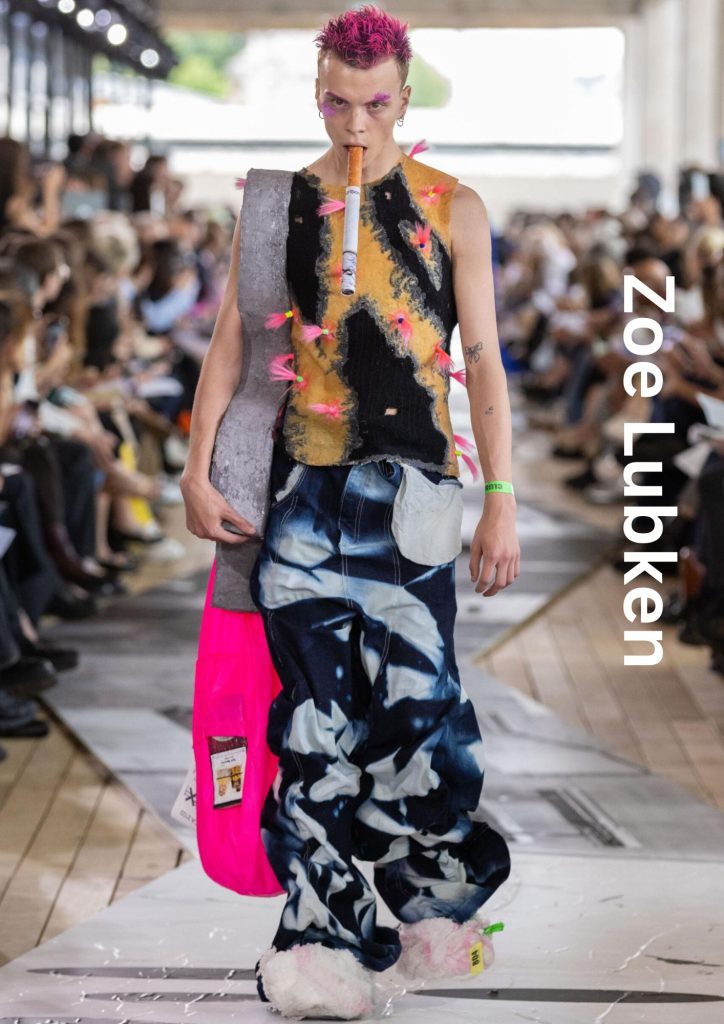
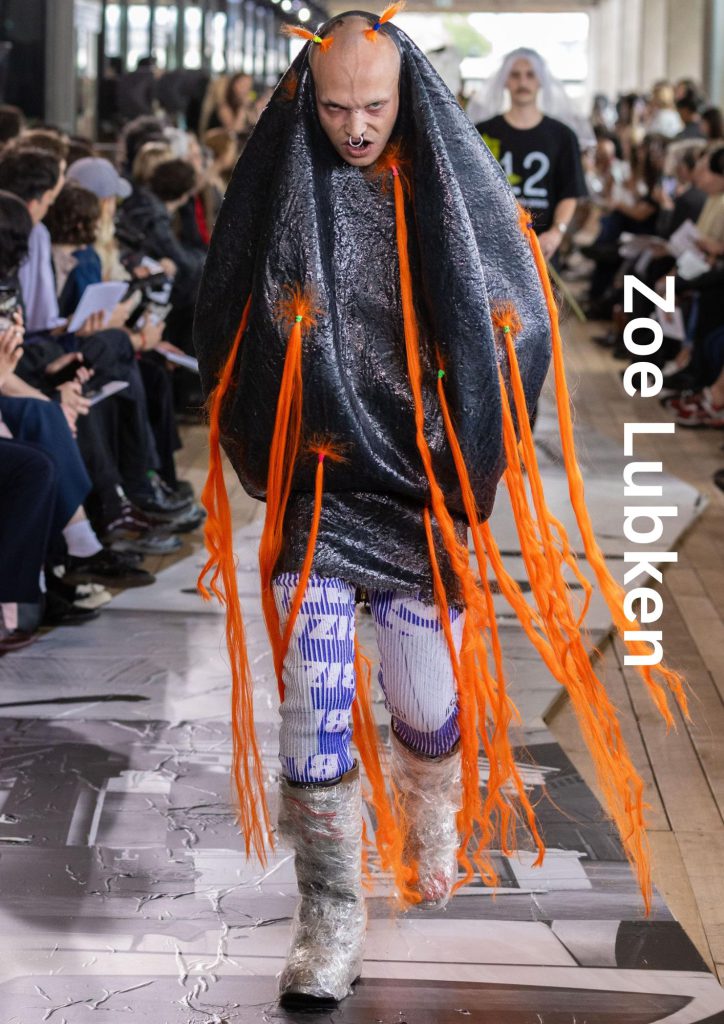
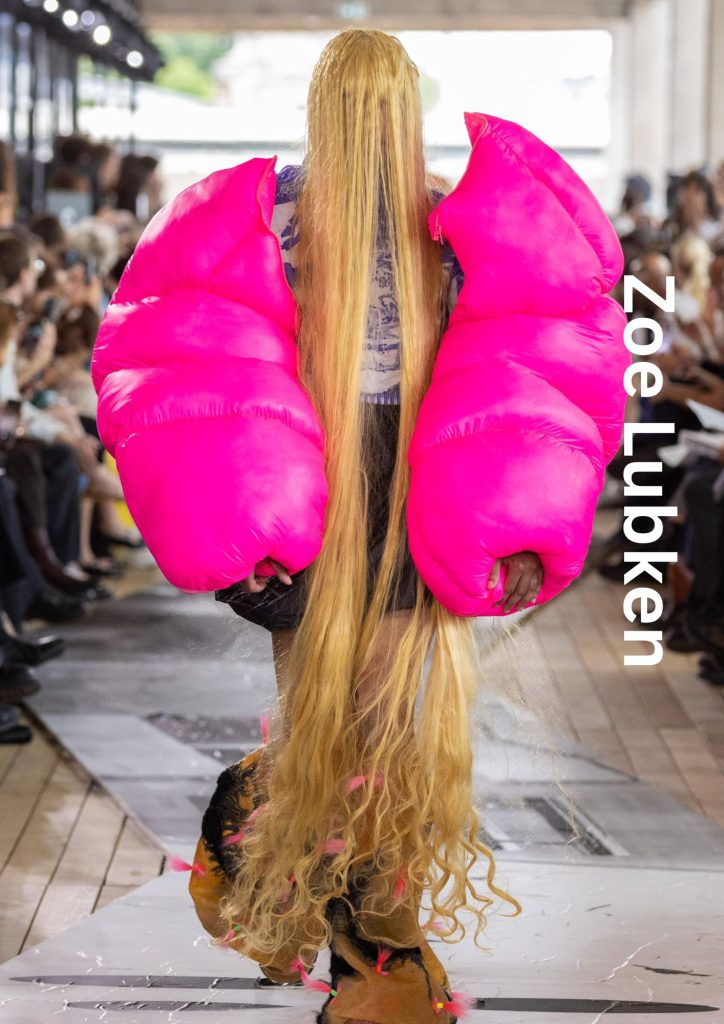
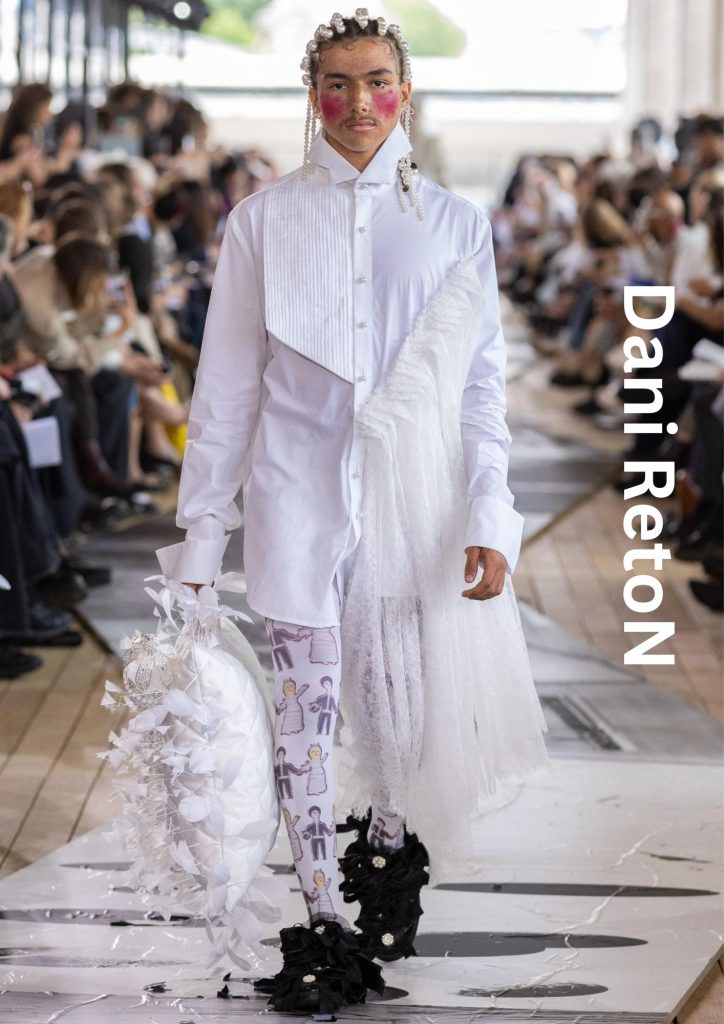
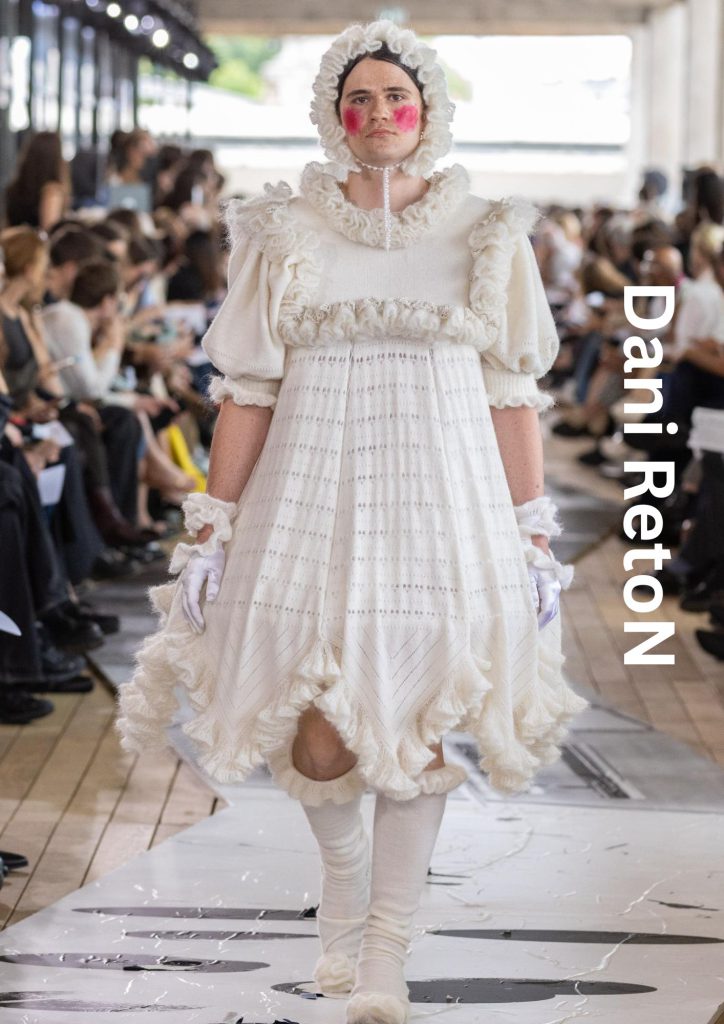
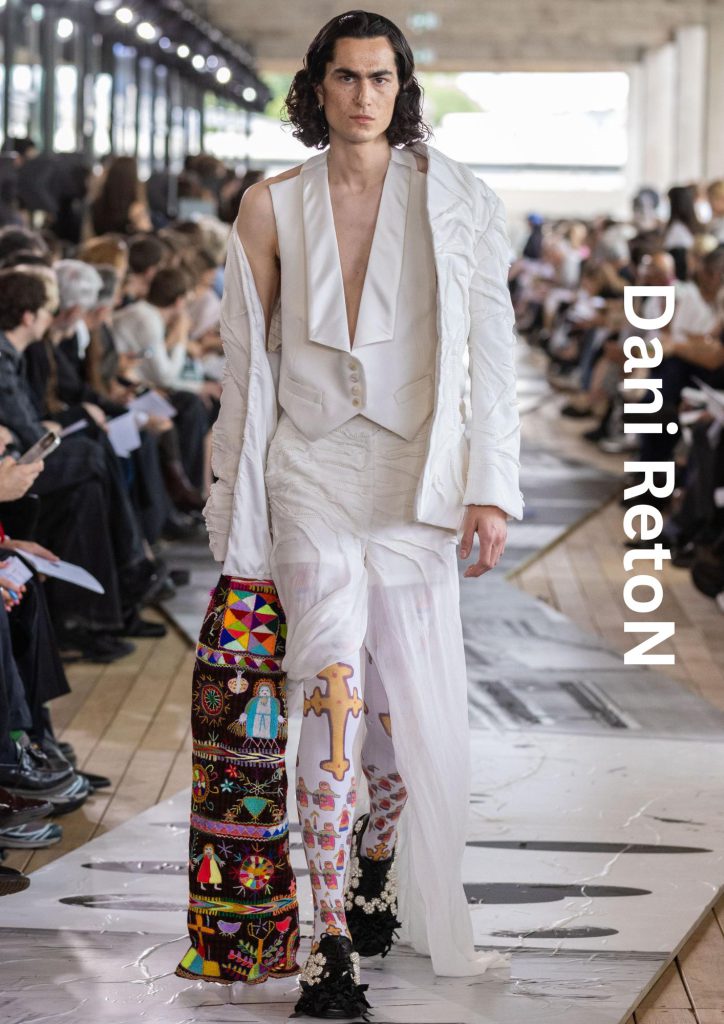
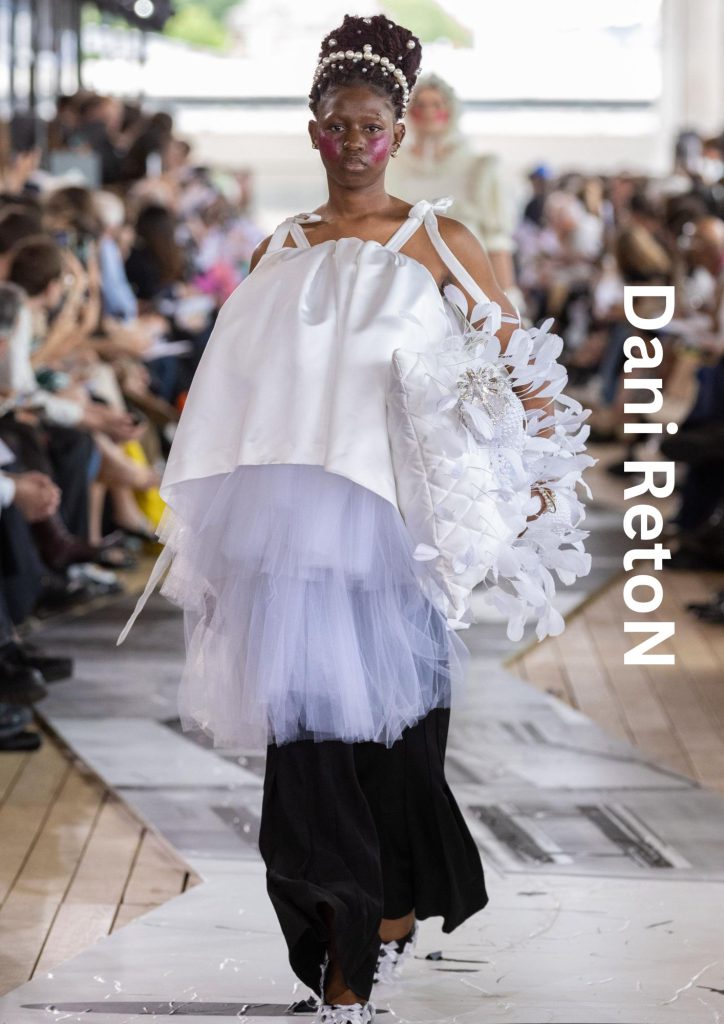
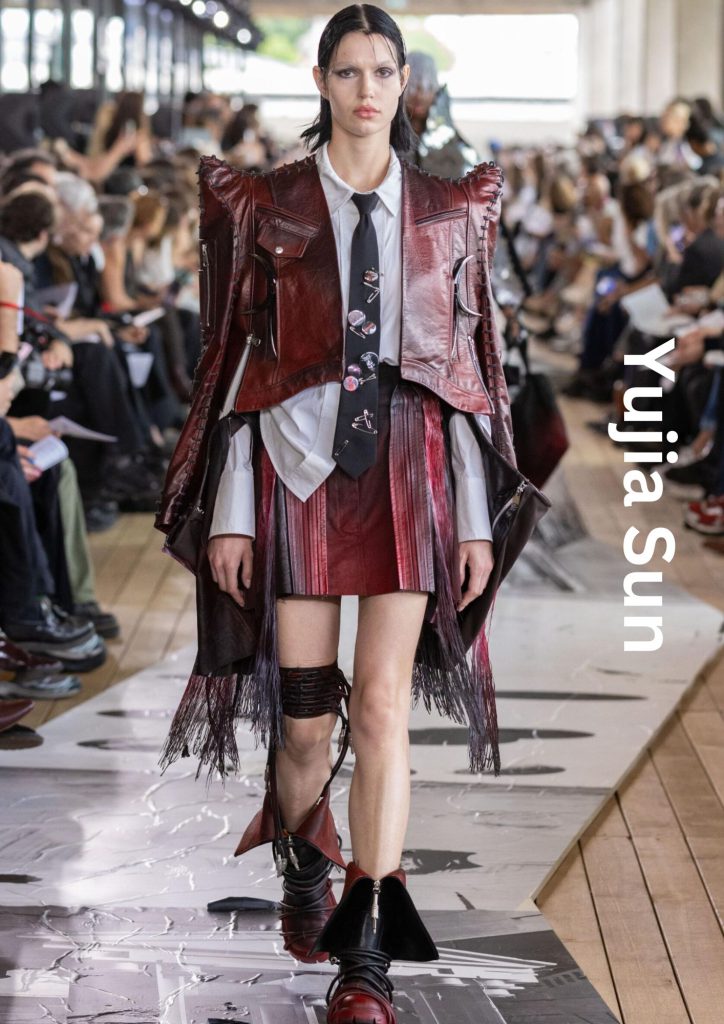
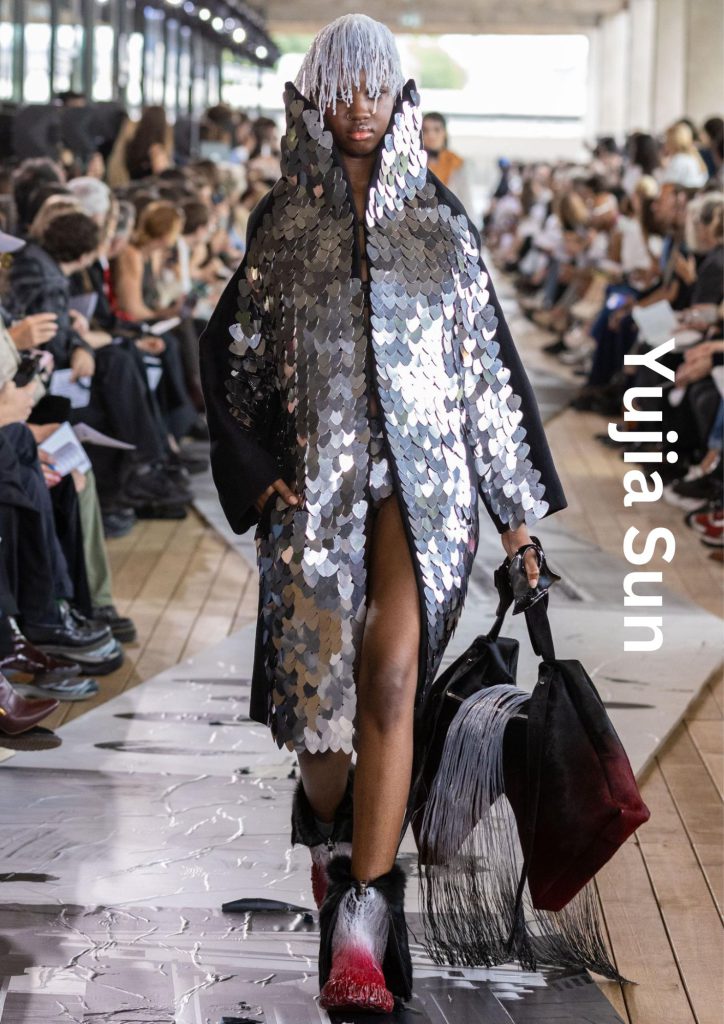
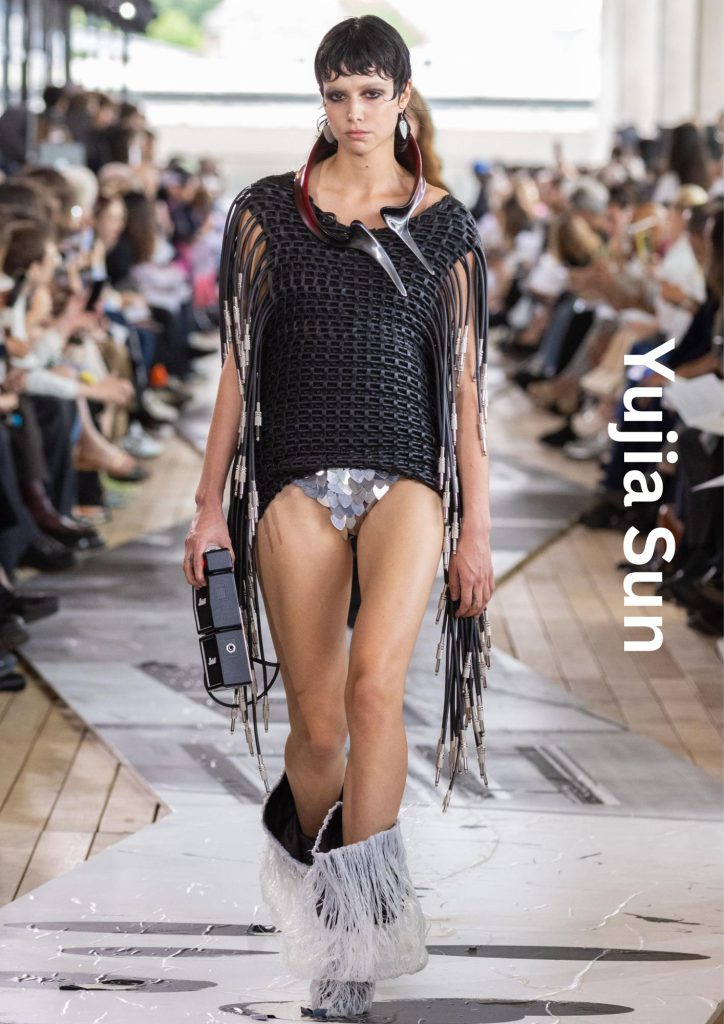
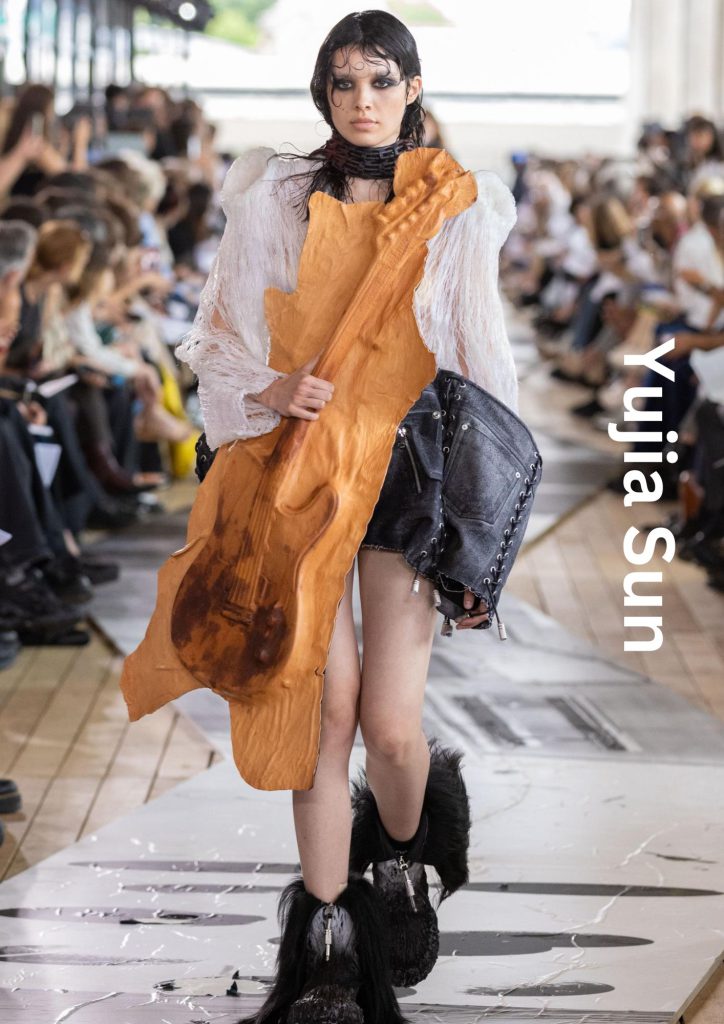
ANTOINE LAFLEUR
“If I had to sum it up in a few sentences, I would say that this collection features silhouettes imbued with a naïve clumsiness,” says the designer Antoine Lafleur. “It reveals, in a childlike manner, how to create a counterfeit synthetic elegance with whatever is at hand.” The aim of the collection was to create a conversation between a normal guy growing up in the world and a fashion student, growing into the fashion sphere. To make this happen, he juxtaposed 50s and 60s haute couture references that he discovered throughout his research, with something super poetic, raw and basic about Paris, the urban landscapes, the textures, but also the people and their attitude. “My inspiration mainly comes from what surrounds me, the conversations I have, the people I love, and the banality of everyday life that everyone tries in their own way to shape into something exceptional,” he says. He loves sourcing new fabrics – each silhouette has a surprising element. Some of them have a special material, some have a really unusual fabric in general. “I like to show something literal while playing with the eye of the beholder,” he says. Bringing all his constant inspirations together was a challenge, but the result is a coherent, well-constructed, and of course, a surprising collection.
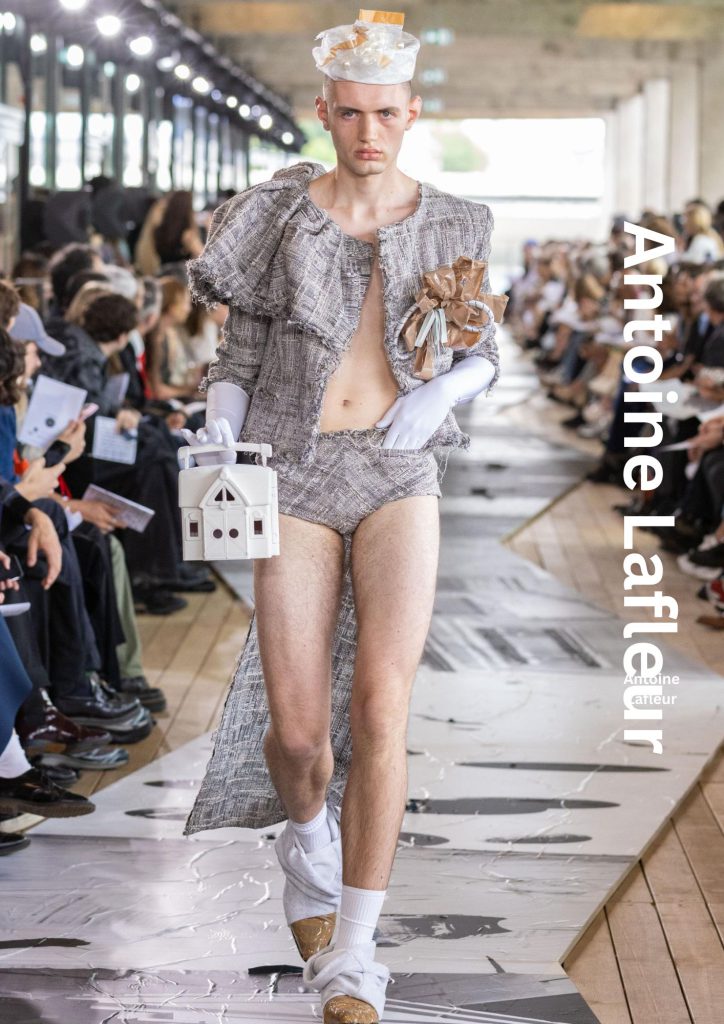
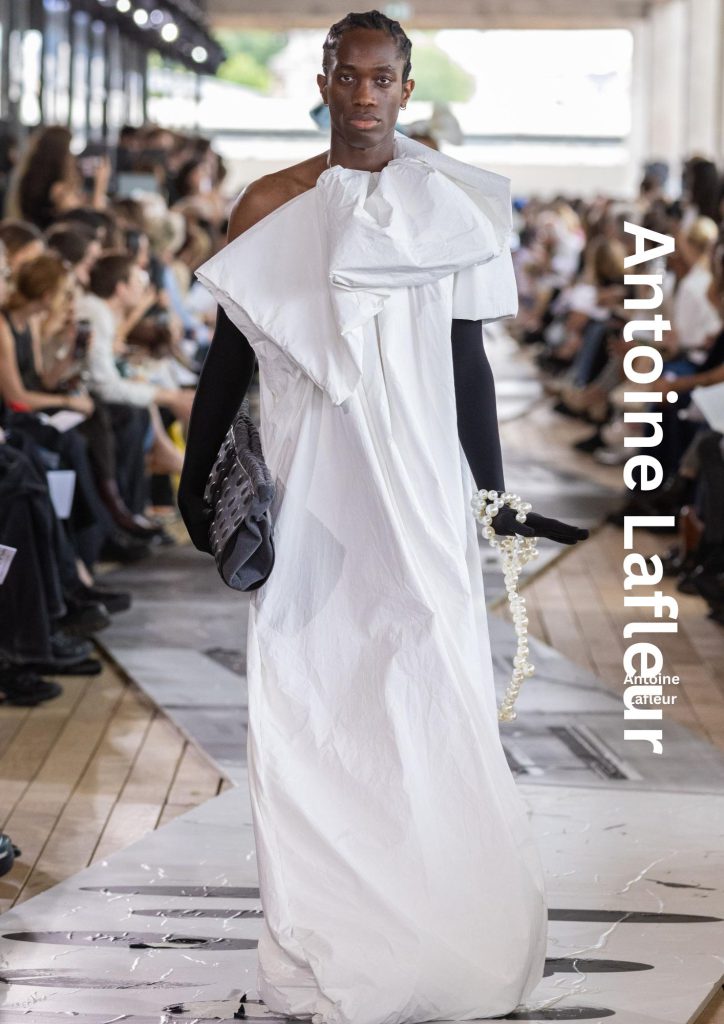
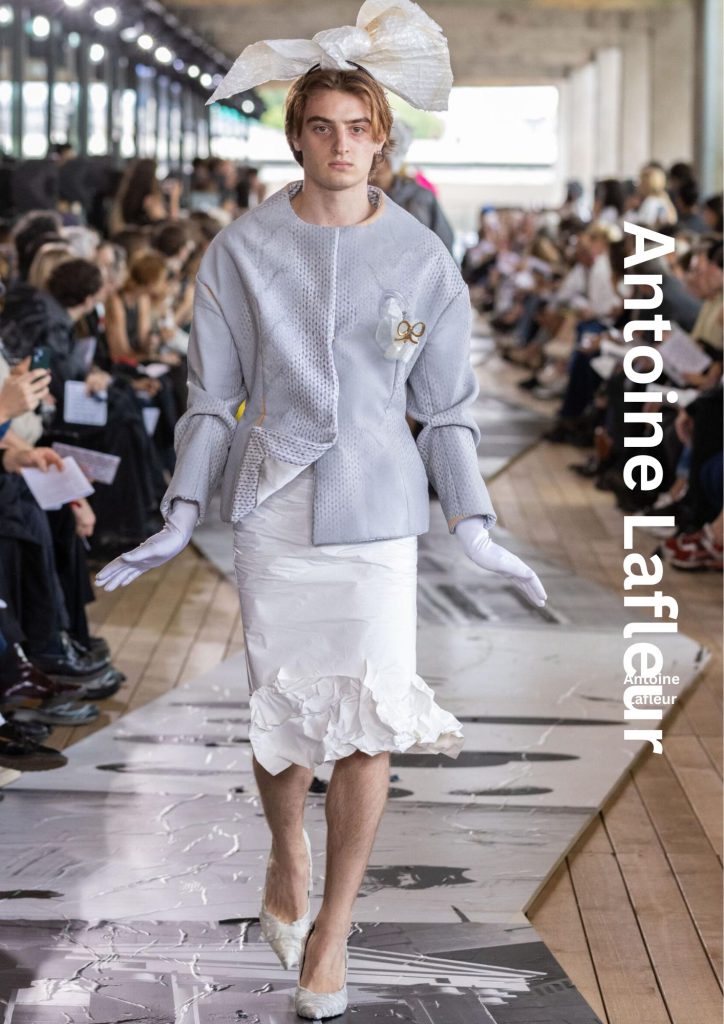
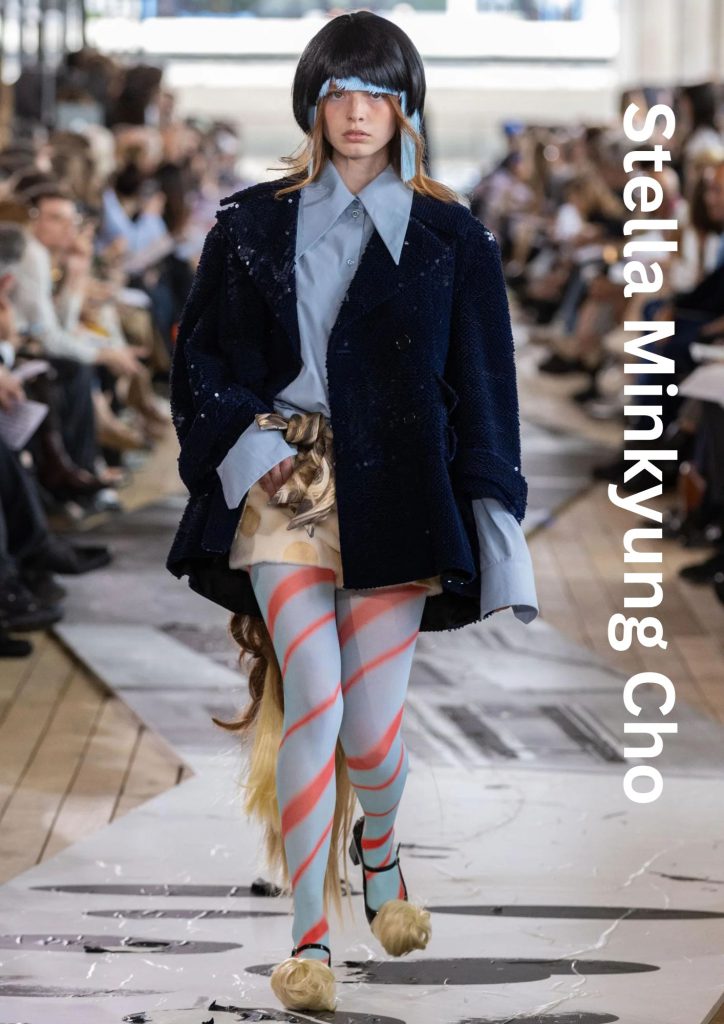
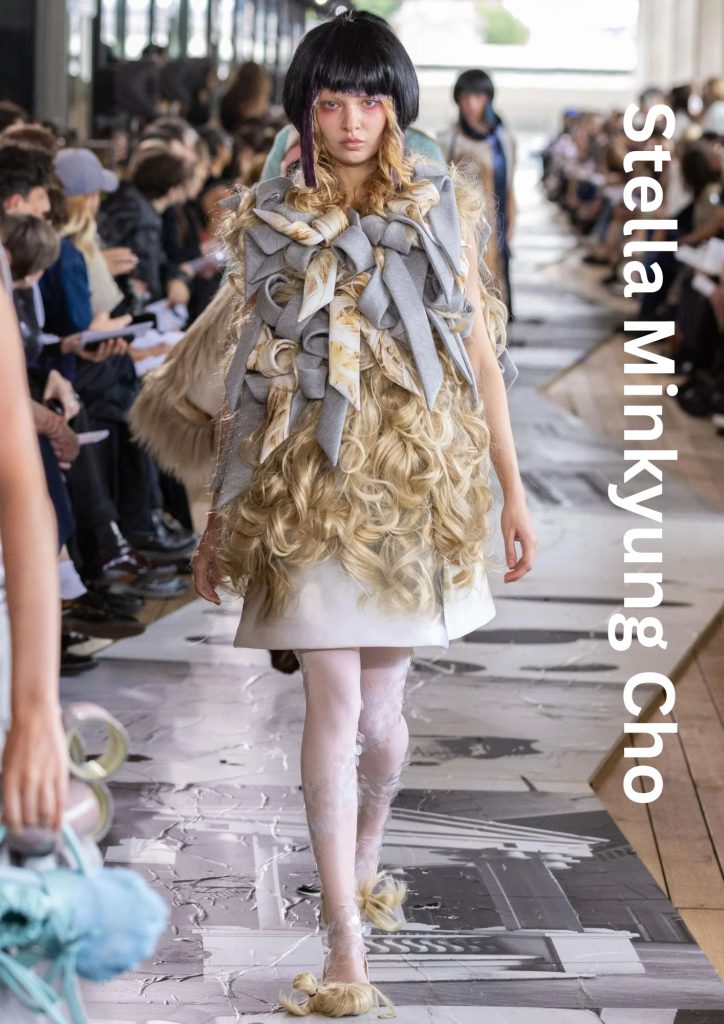
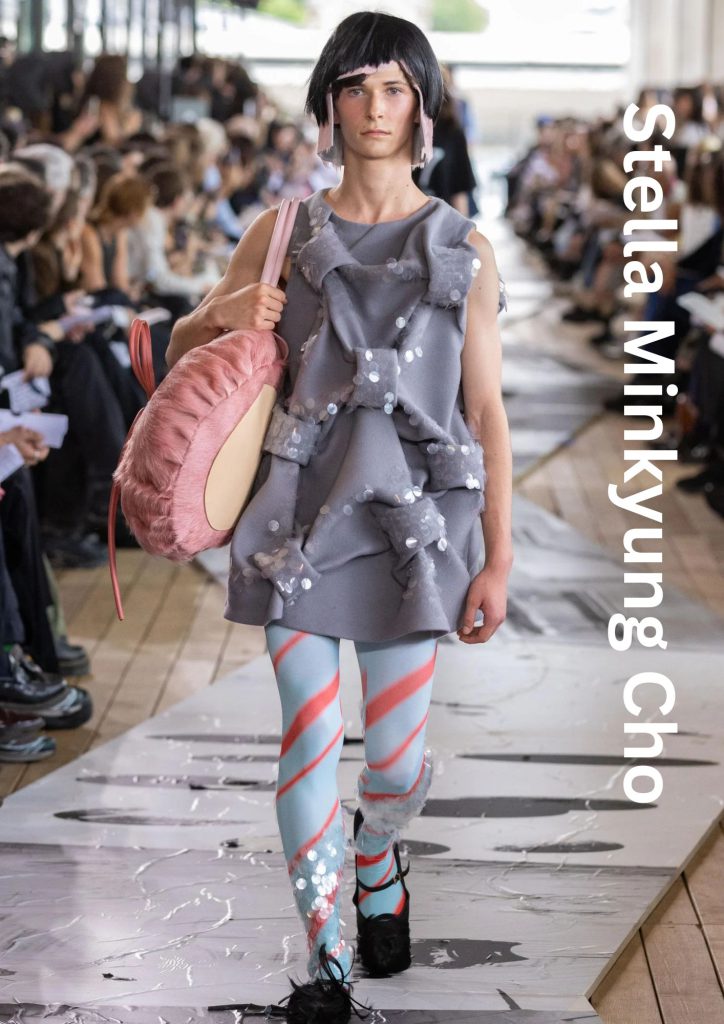
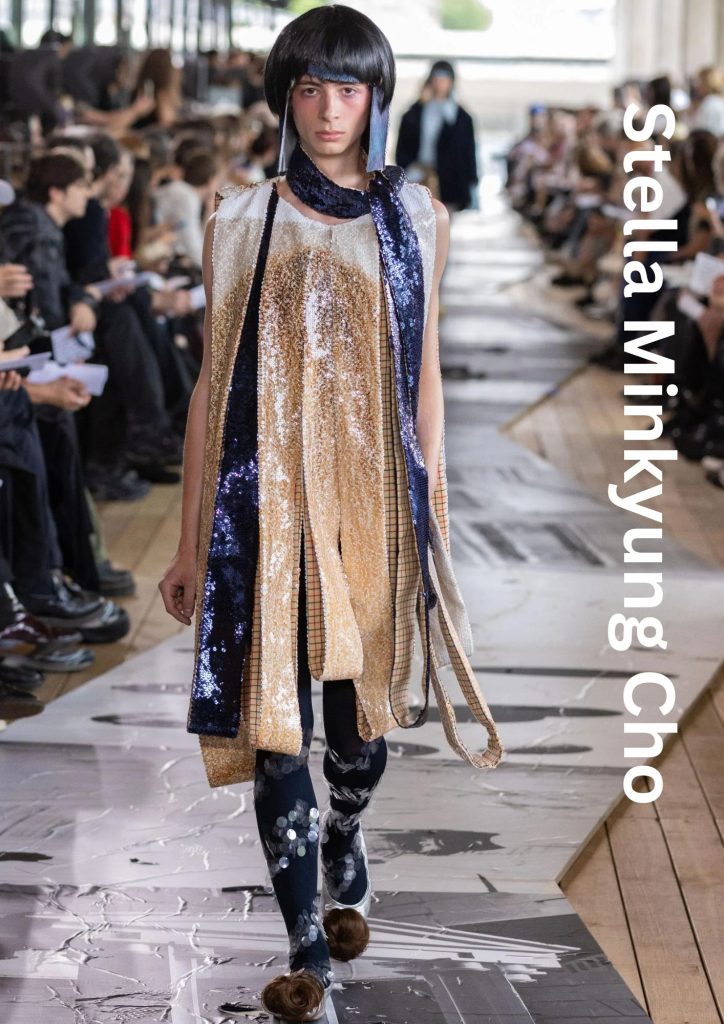
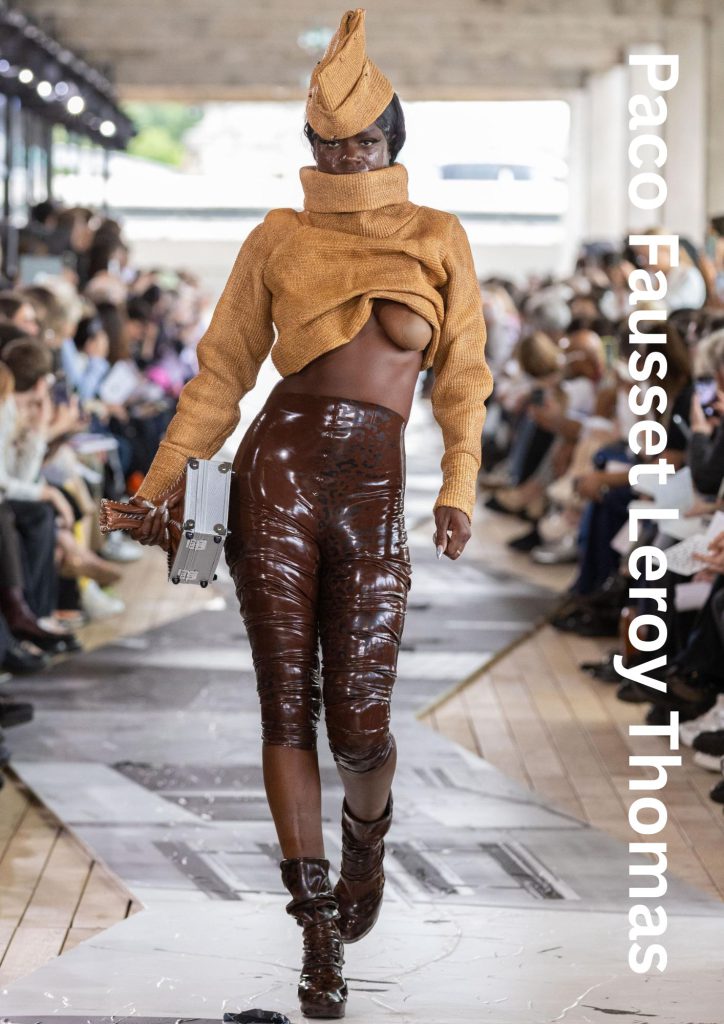
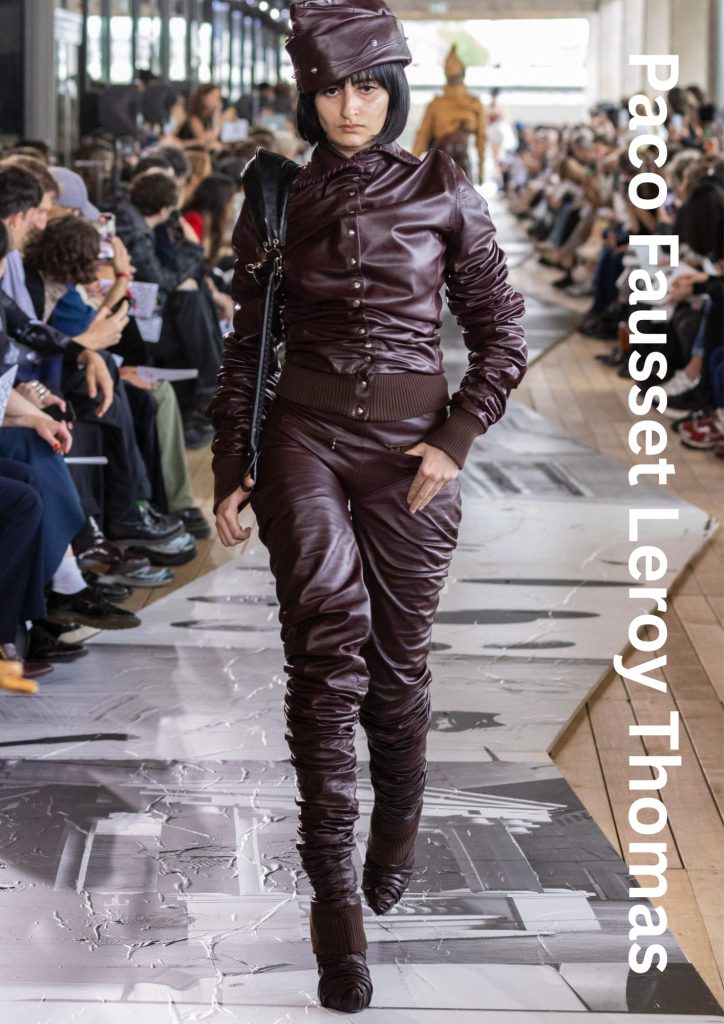
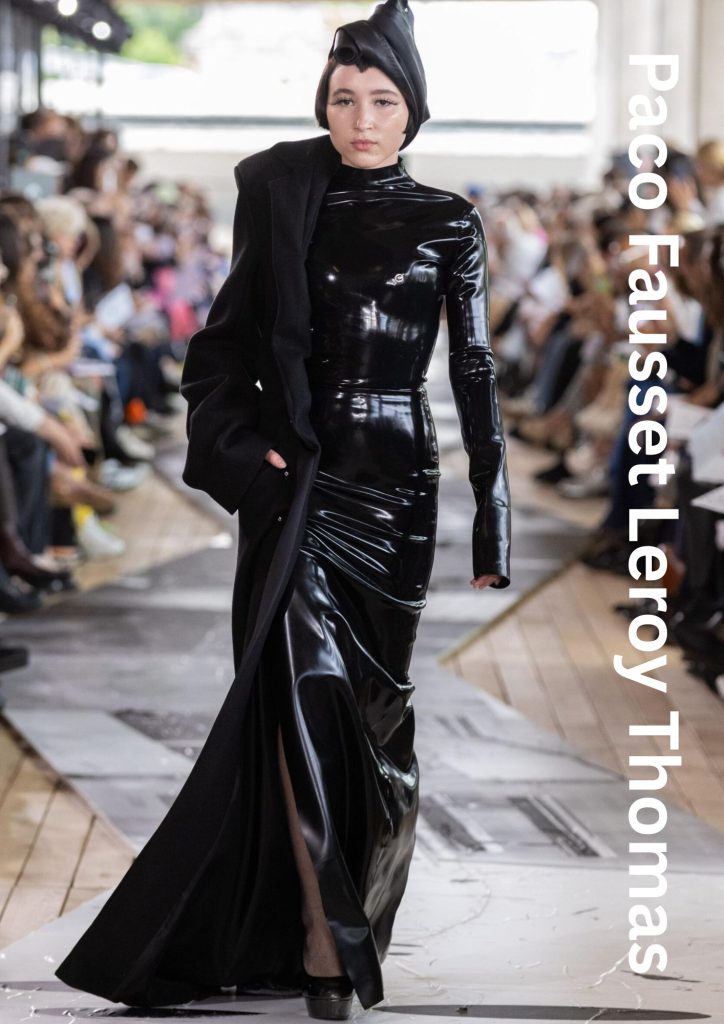
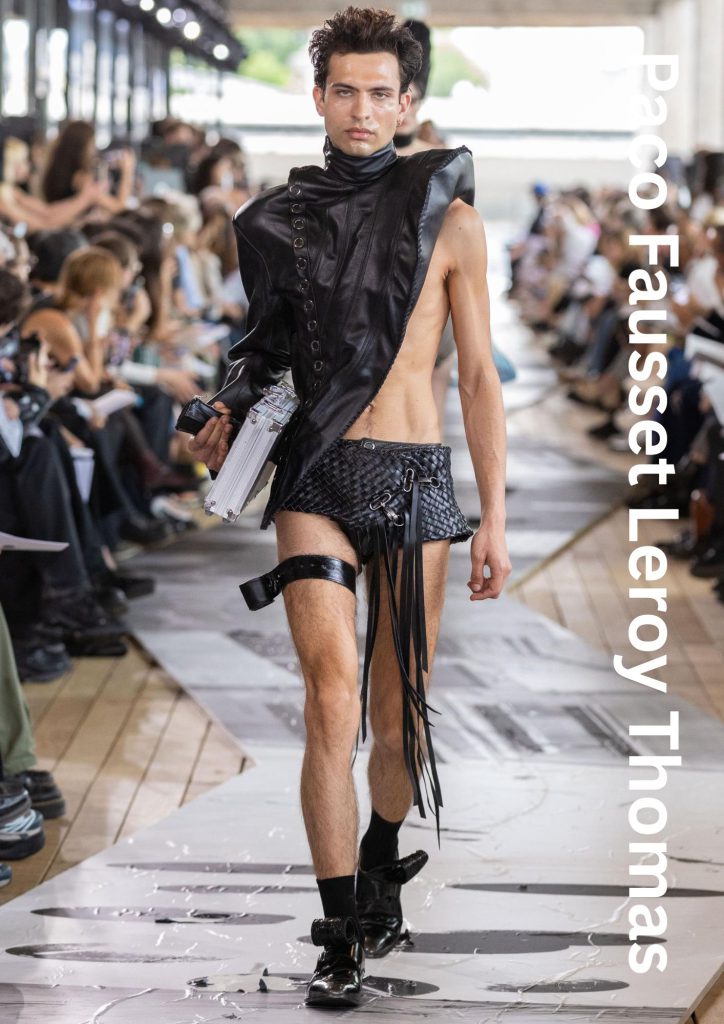
GWEN BODIOU
“My collection is about a weird and awkward guy who doesn’t know how to stand and act in society,” says the designer Gwen Bodiou. Additionally, the guy also thinks he is a superhero. A lot of designers think of a generic character when they design their clothes, but Gwen thought of a very specific person. Some people may be confused by the weirdness of the guy, but Gwen used this as an opportunity to play. “I am playing a lot with the idea of attitude and I am trying to find it through this guy’s eyes – his idea of coolness, sexiness or sensuality,” he adds. He really wanted to figure out how garments help the character to be himself, to pose, to express. Throughout his research process, one of Gwen’s main inspirations was the TV show Batman, filmed in 1966. In this show, the heroes look very ridiculous in very serious situations, whilst portraying a very old-fashioned image of masculinity. Gwen was very intrigued by this juxtaposition. Additionally, he was intrigued by modern meme culture, and the “cringe face”, which again, relates to his character – a person who wants to be invisible, but ends up looking ridiculous. “The process was very interesting because I started by thinking about attitudes and how movements would influence clothes,” he says. Then the first prototypes came around and he had a lot of fun by getting inspired through unusual garments, like the superhero cape. Even though this was a fun collection to work on, finding the right balance between funny and awkward and elegant and subtle was a challenge.
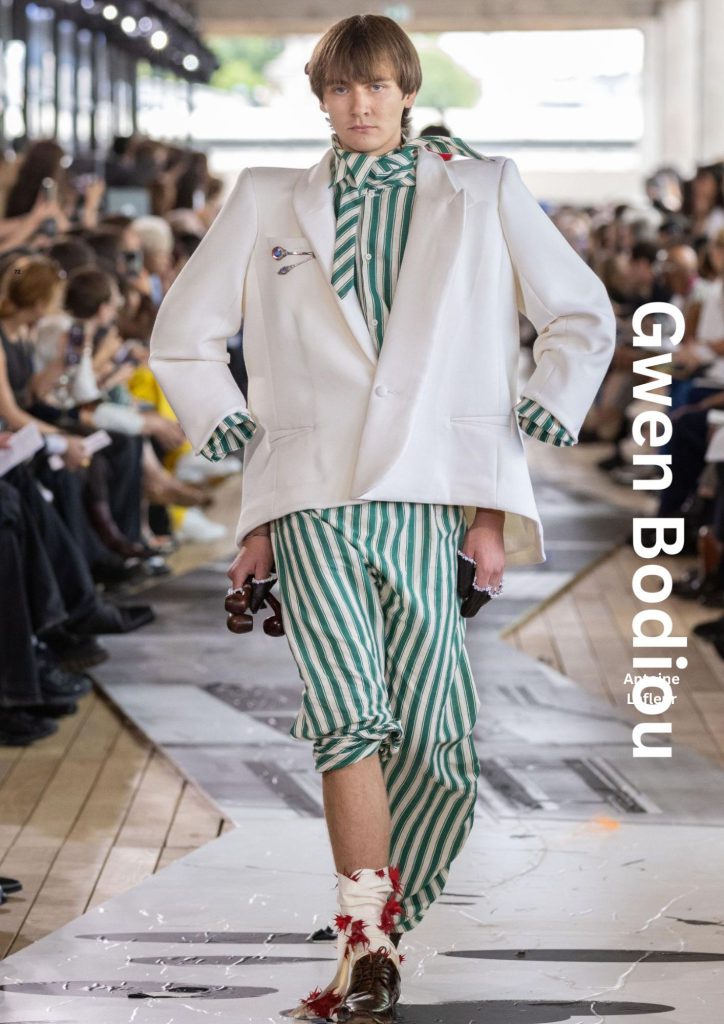
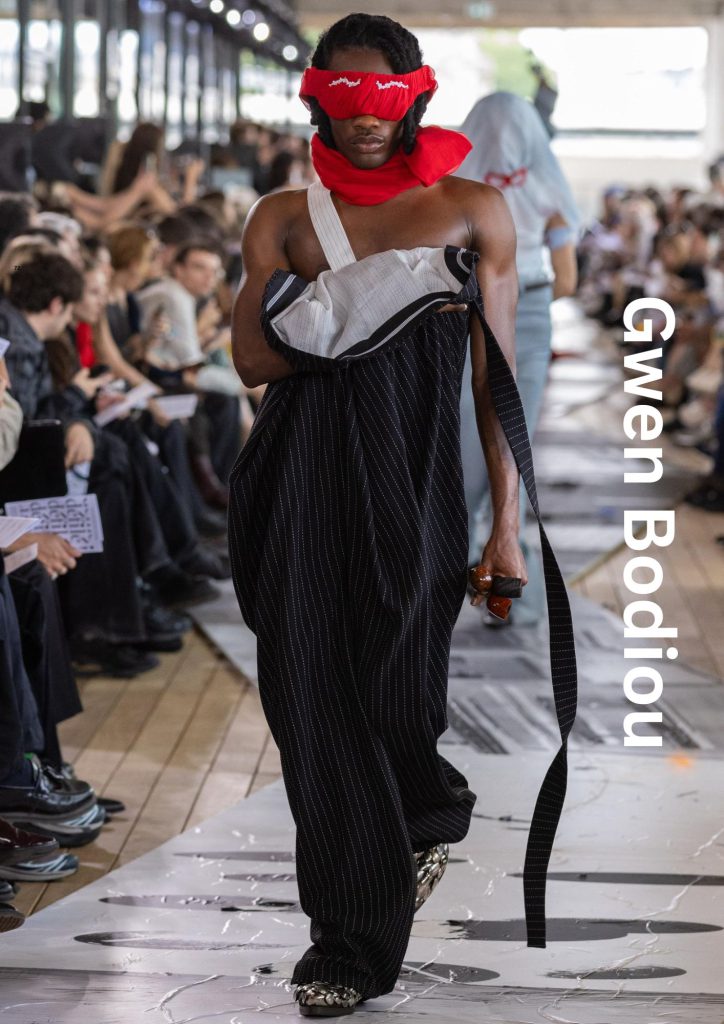
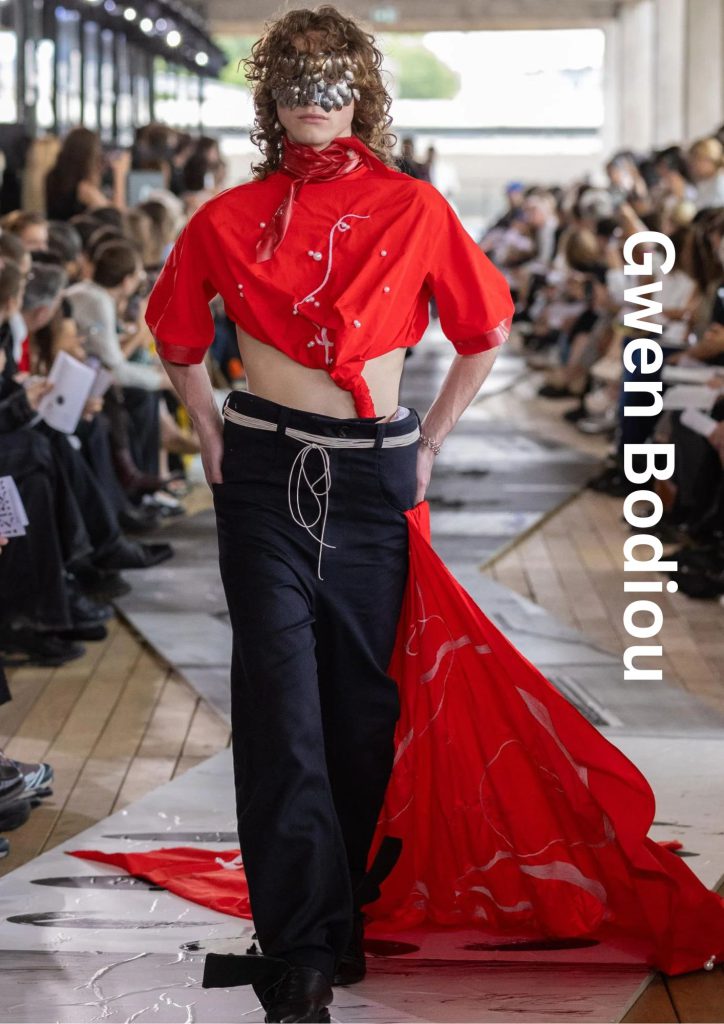
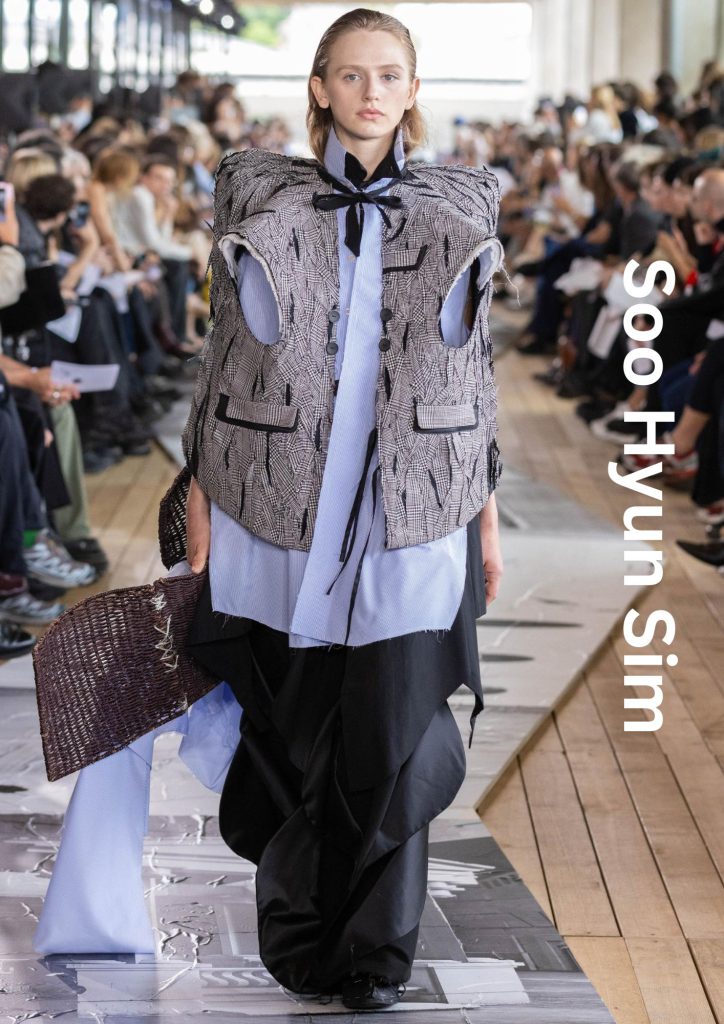
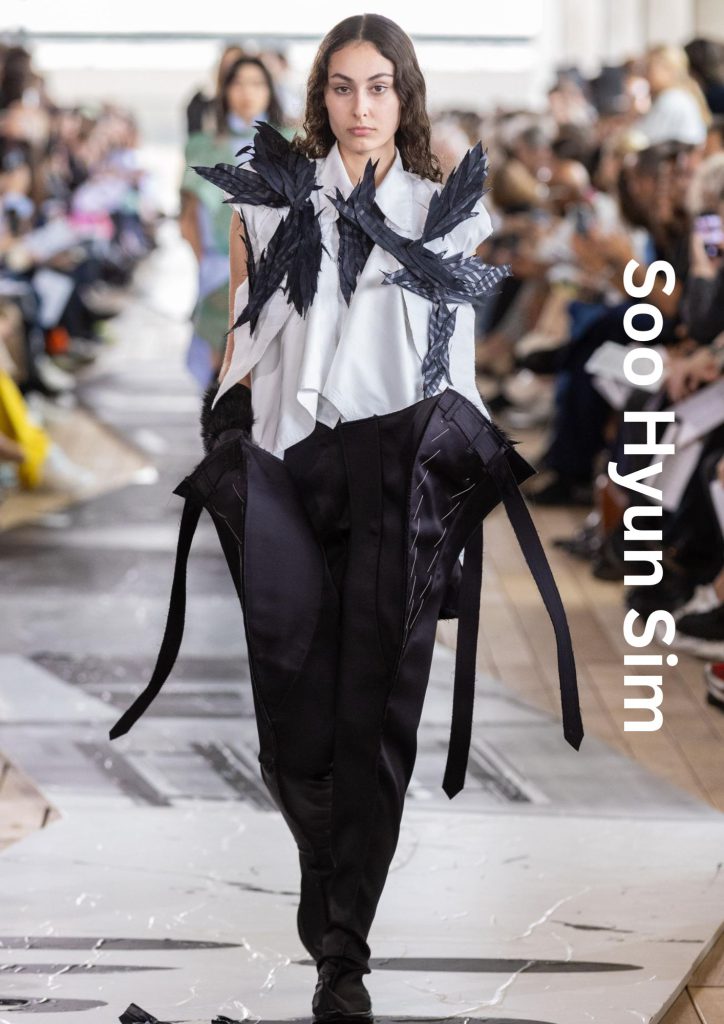
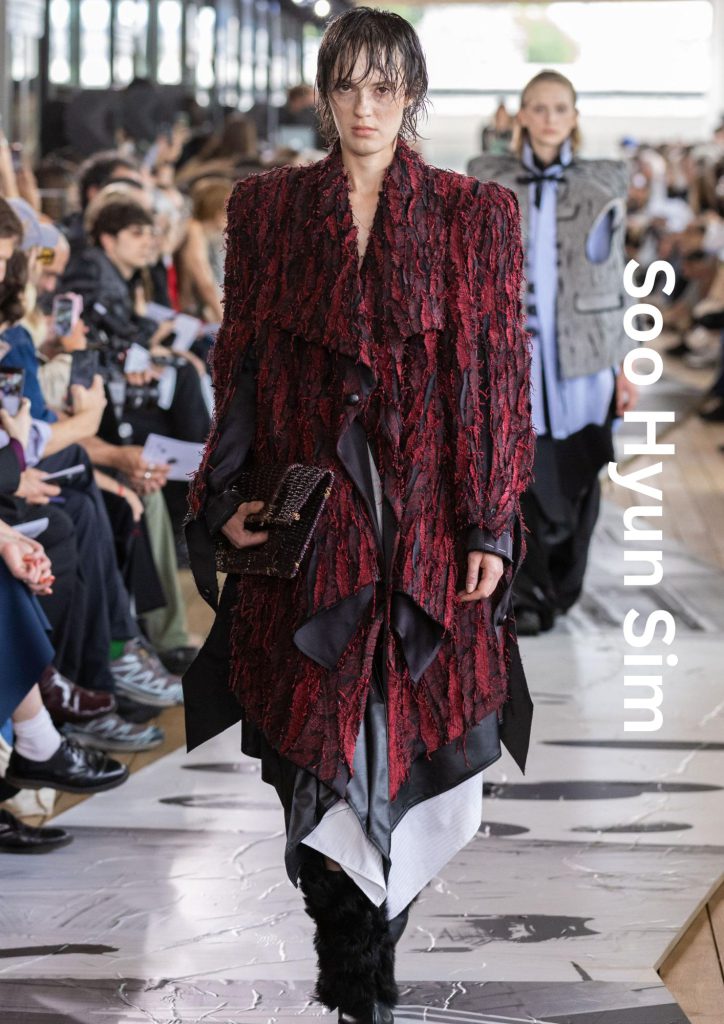
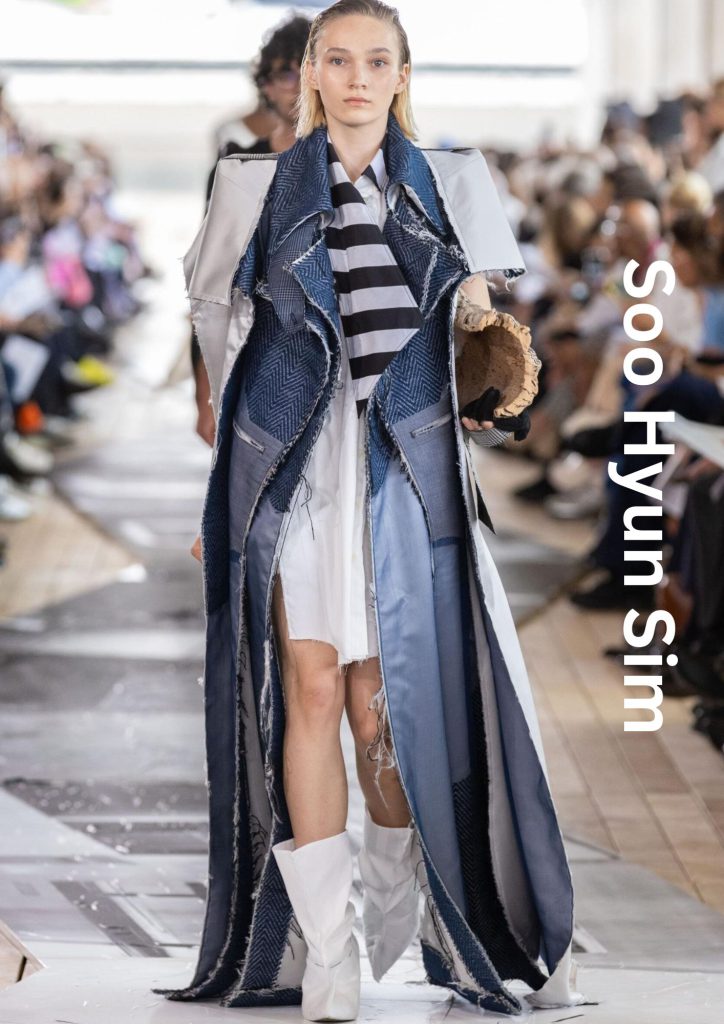
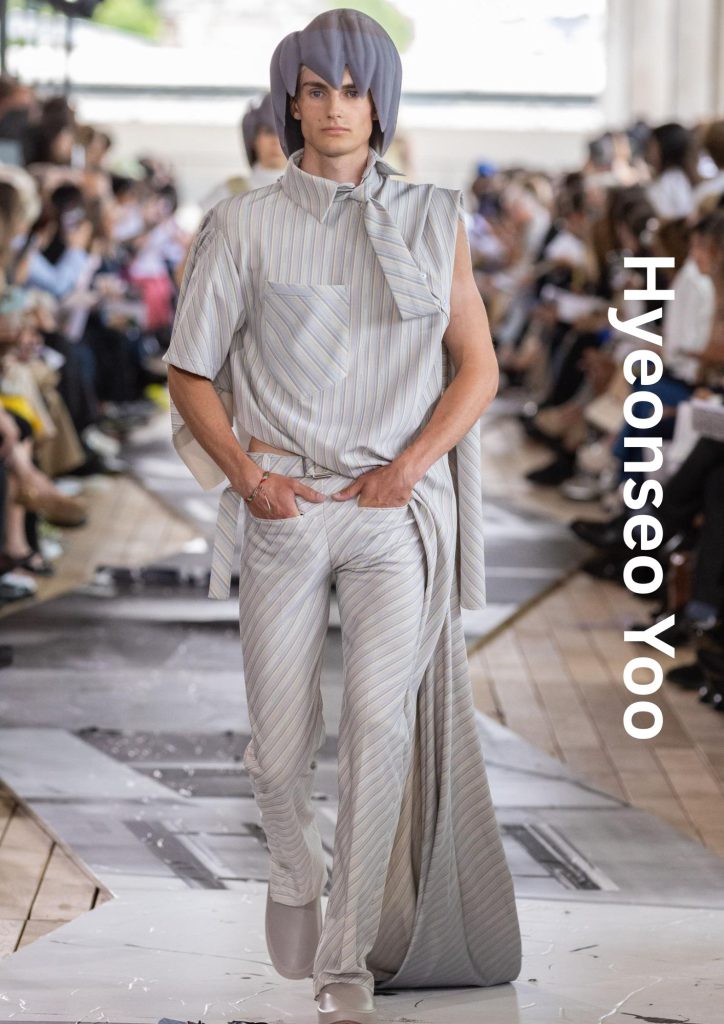
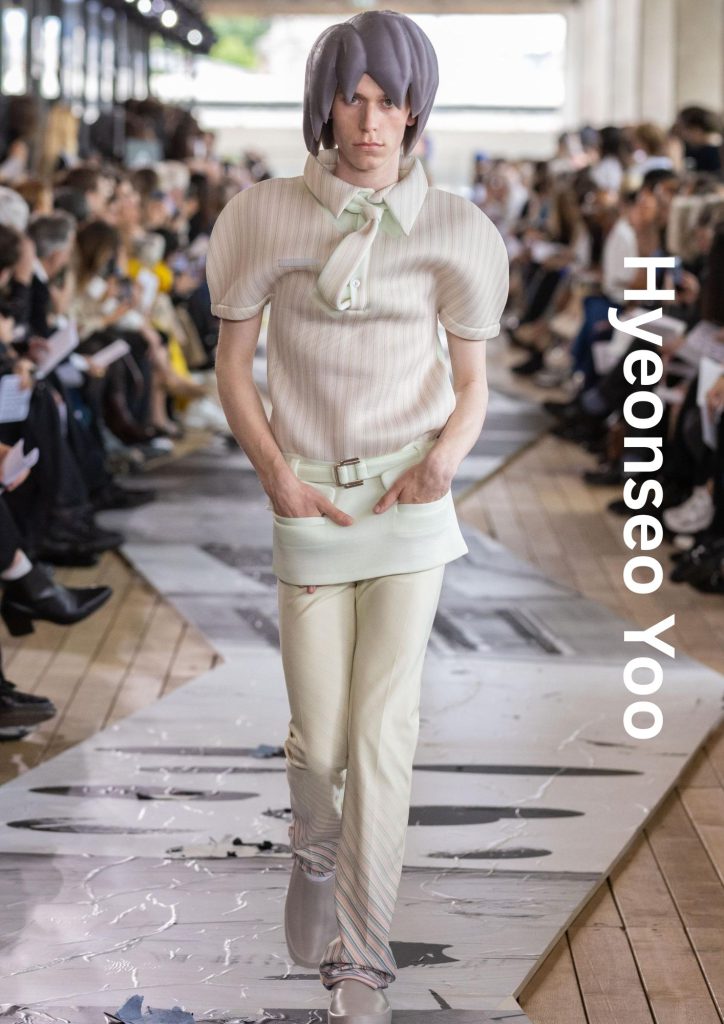
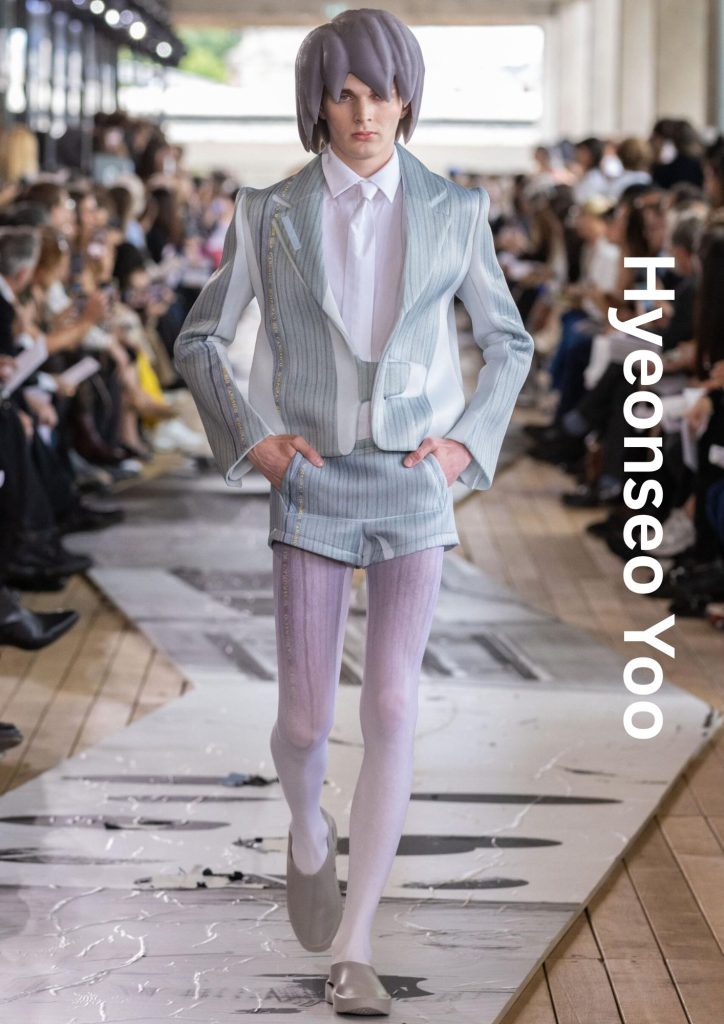
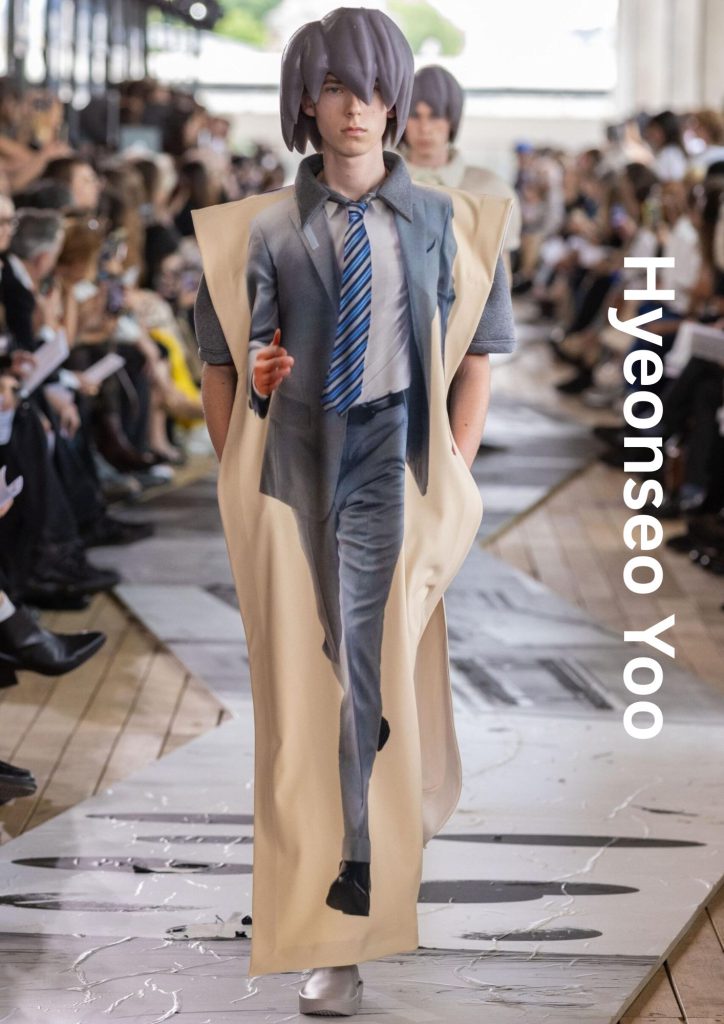
VALENTIN PRINZ
Valentin Prinz grew up in southern Germany. For his final collection he got very inspired by southern German traditional culture, garments and minimal art. “I reimagined garments that have been handed down through generations in my family, aiming to evoke memories such as the sound of cowbells in the fields surrounding my childhood home and the Swabian Alemannic Fastnacht parades with their bell-embellished costumes,” he says. For his collection, he wanted to blend these traditions with his passion for minimal art. The simple shapes and the act of repetition create an unexpected harmony between the two. “The process began with a journey through photo albums of my childhood and those of my mother and grandmother,” he says. “I observed how garments and traditions were preserved and passed down through generations. I studied the construction and materials of these heirloom garments. I frequently explored connections to works to minimal art.” In the end, he focussed on individual pieces, rather than full looks, constantly styling and editing the collection. “Essentially, I was creating a wardrobe. The wearer and their comfort played a central role,” he finishes.
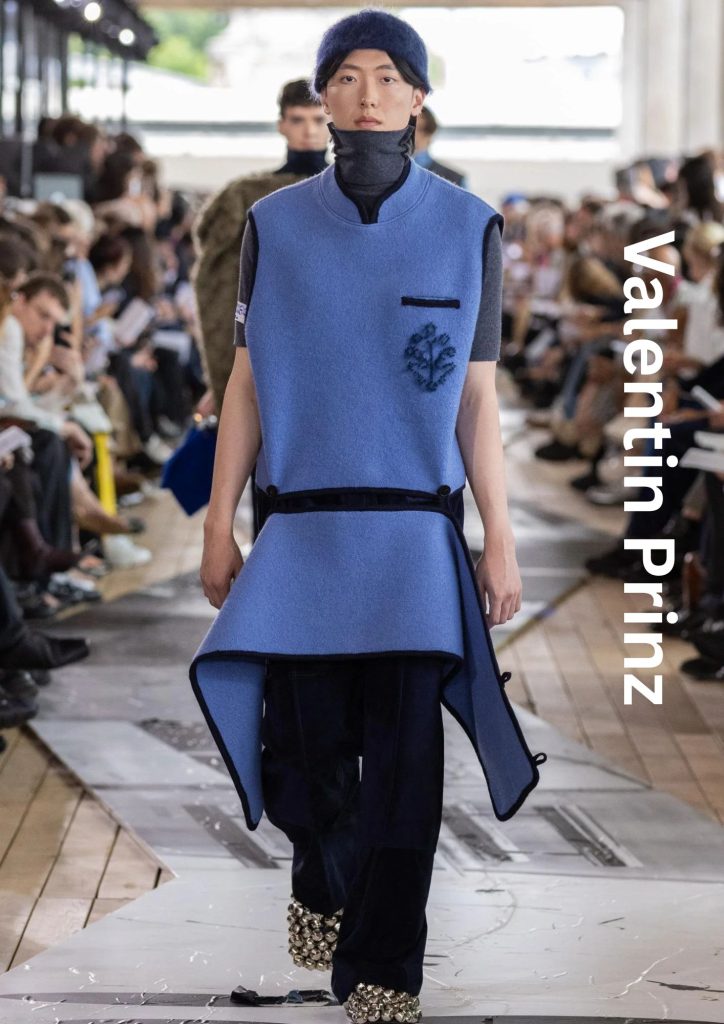
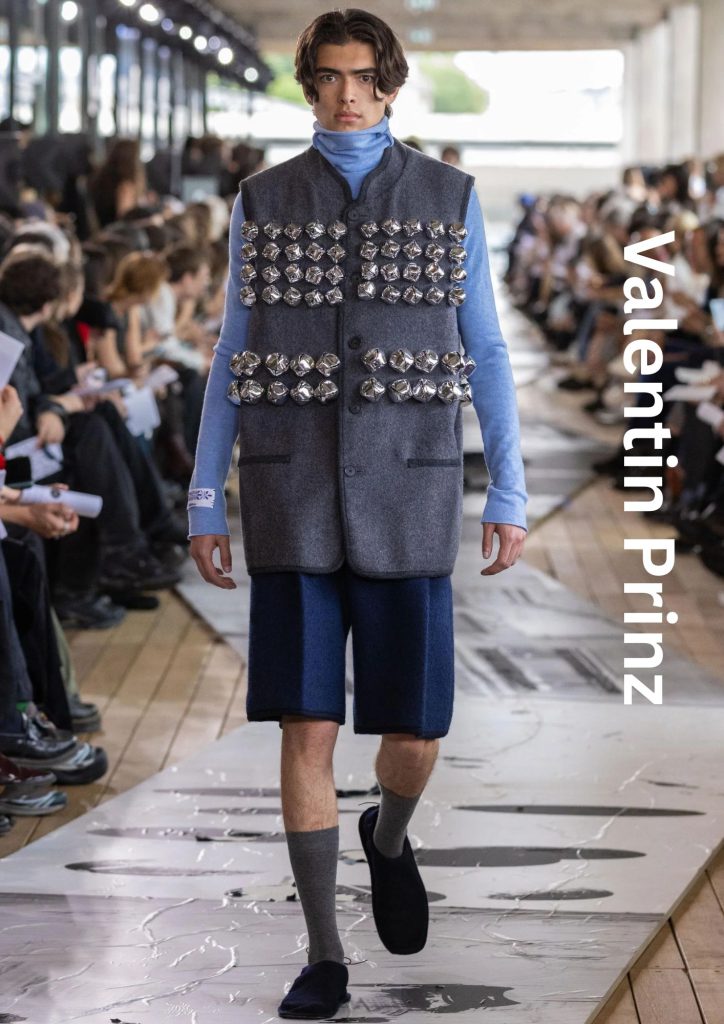
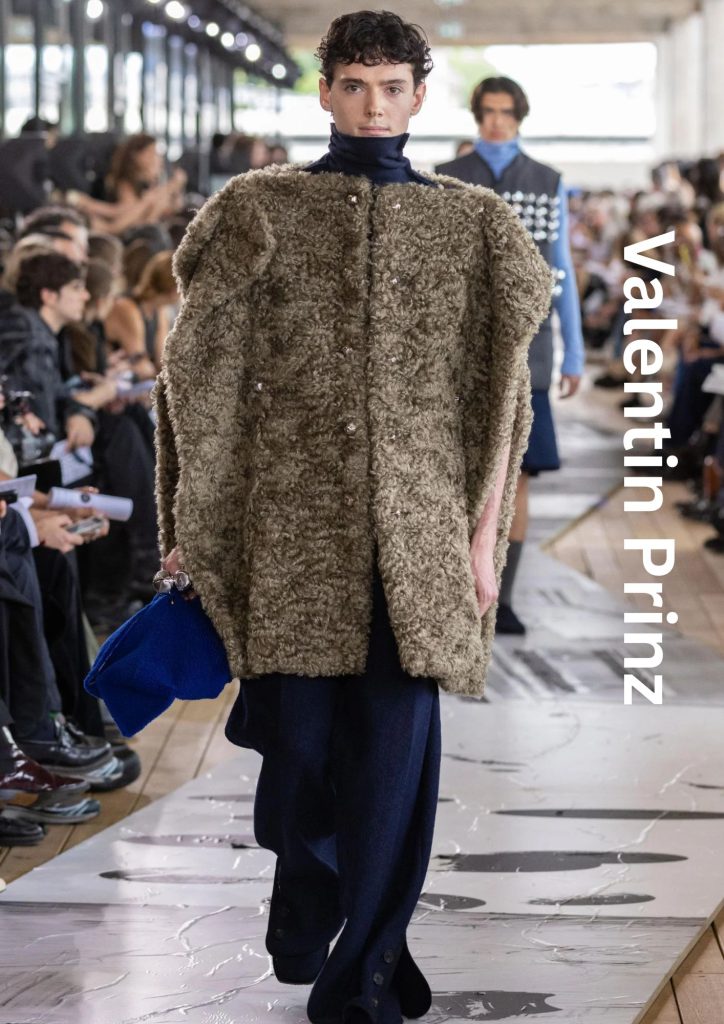
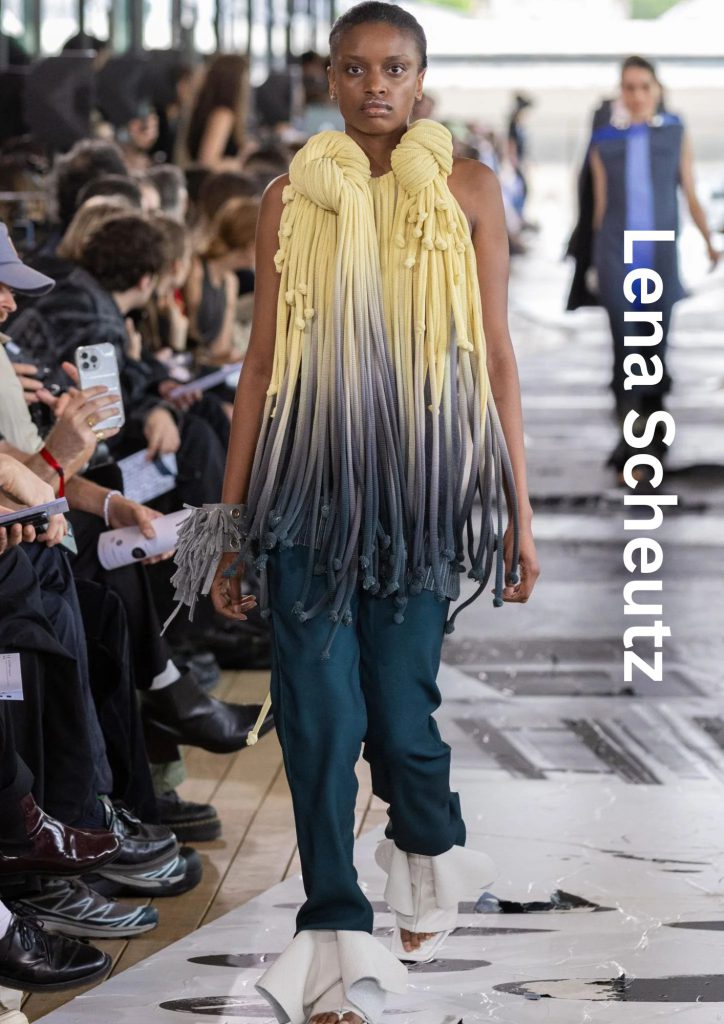
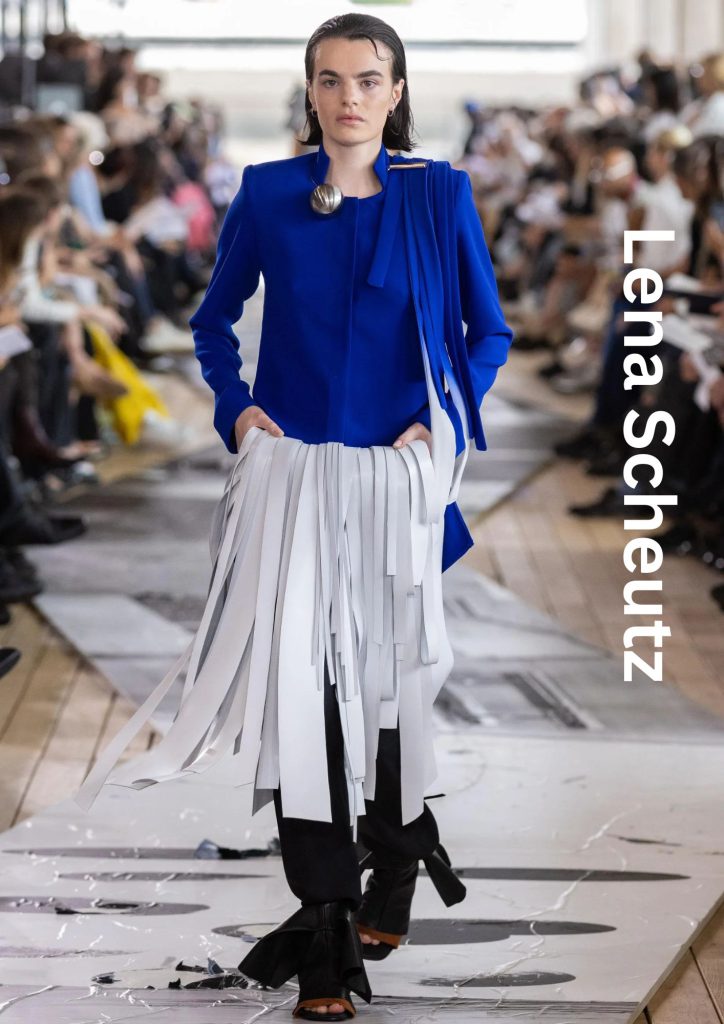
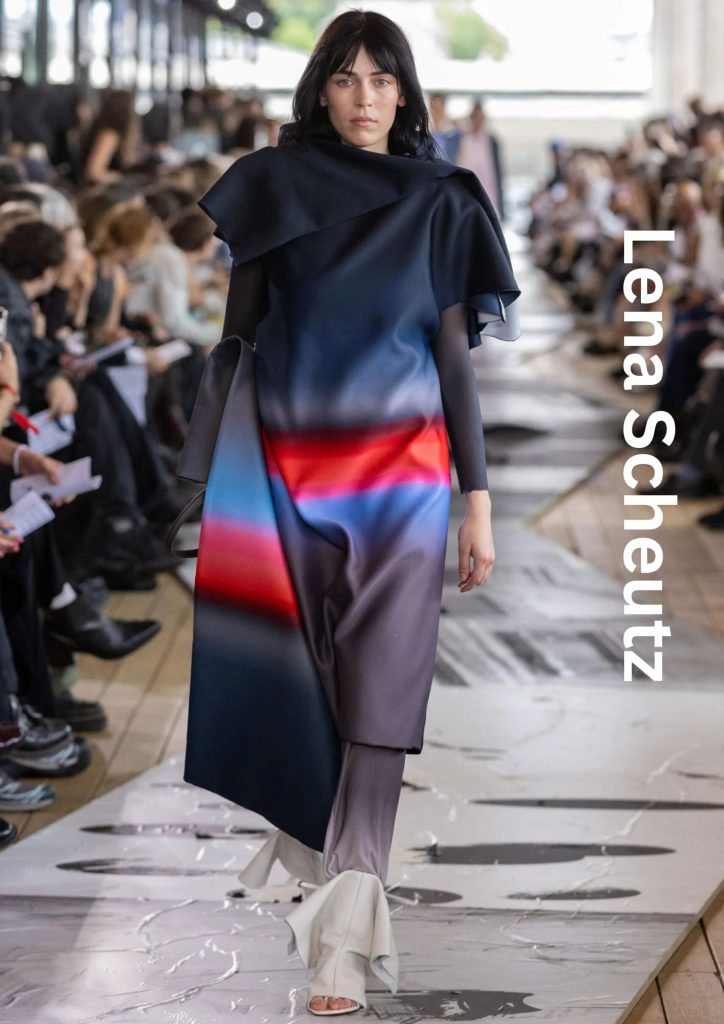
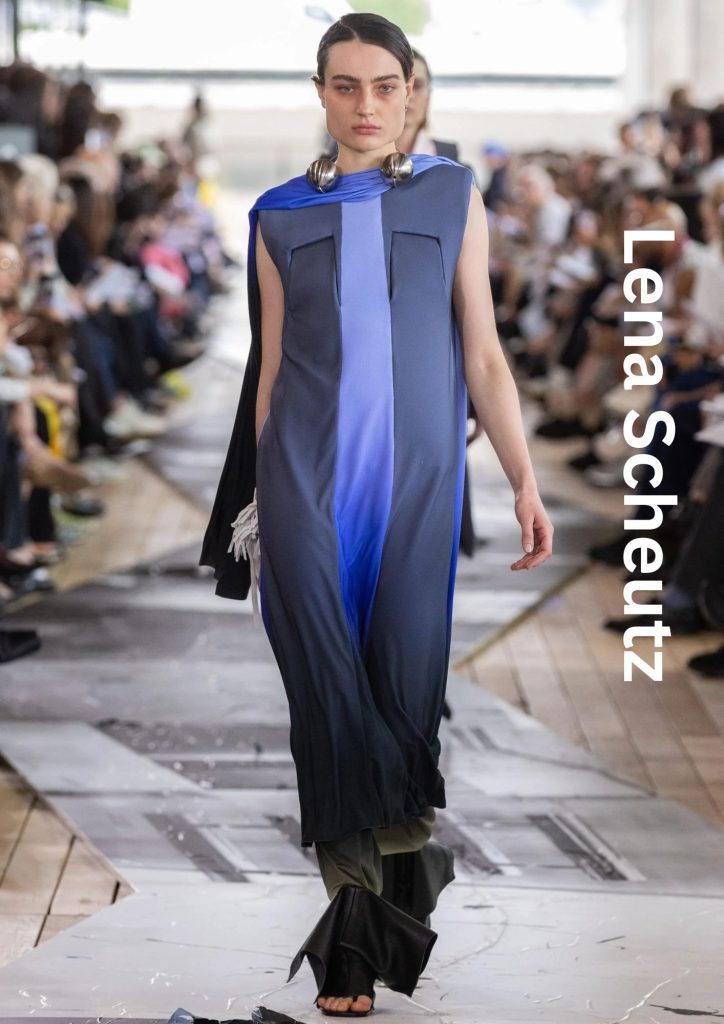
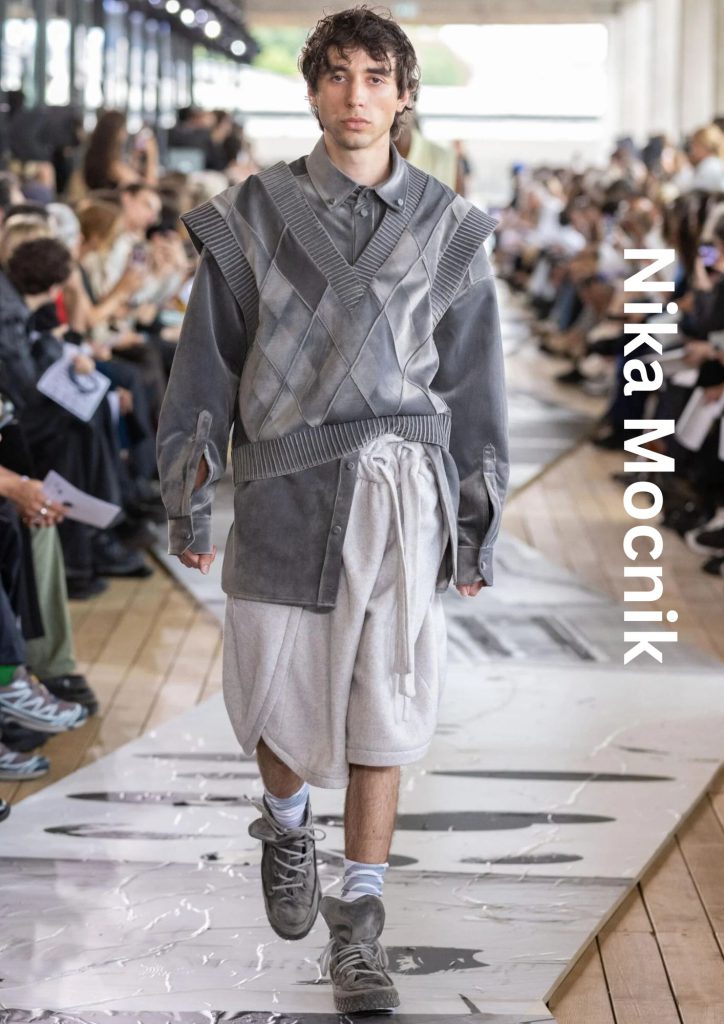
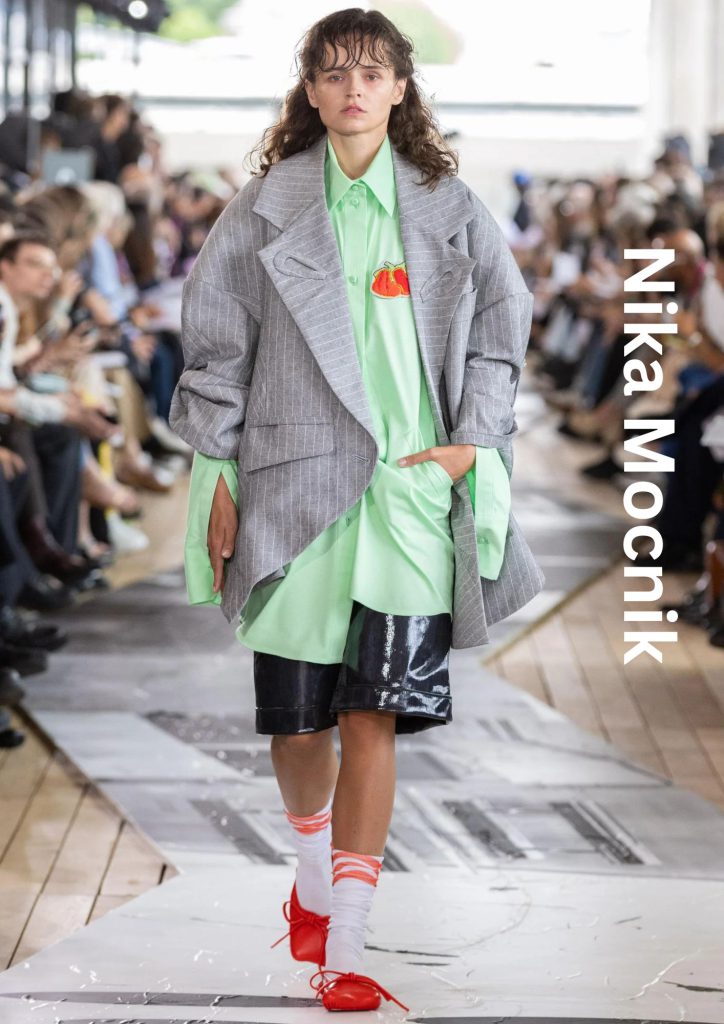
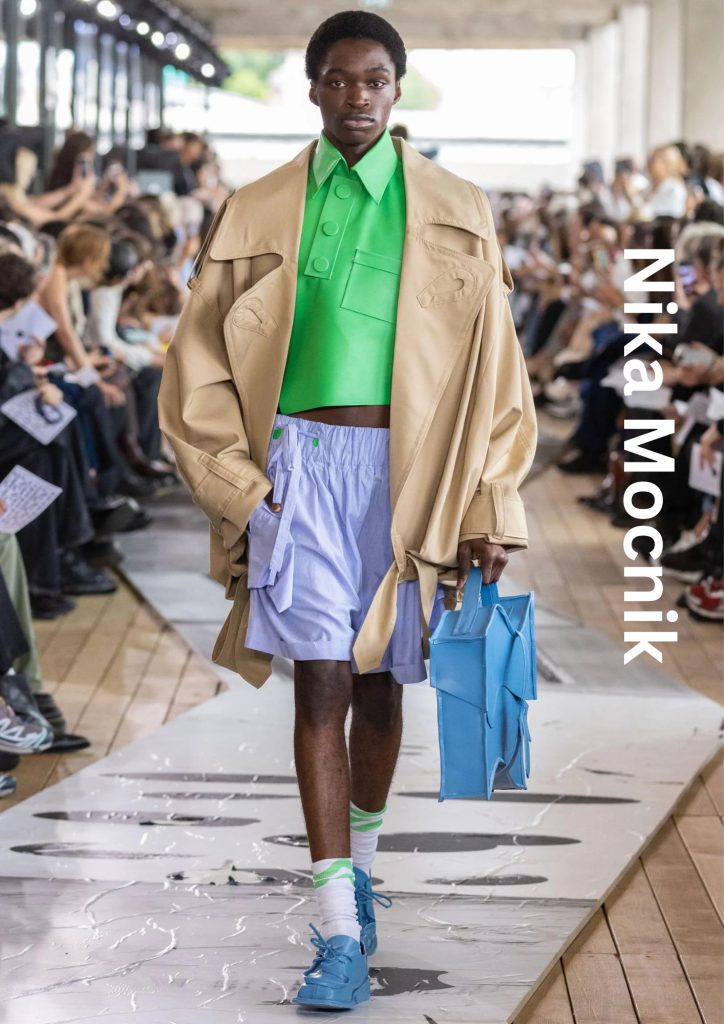
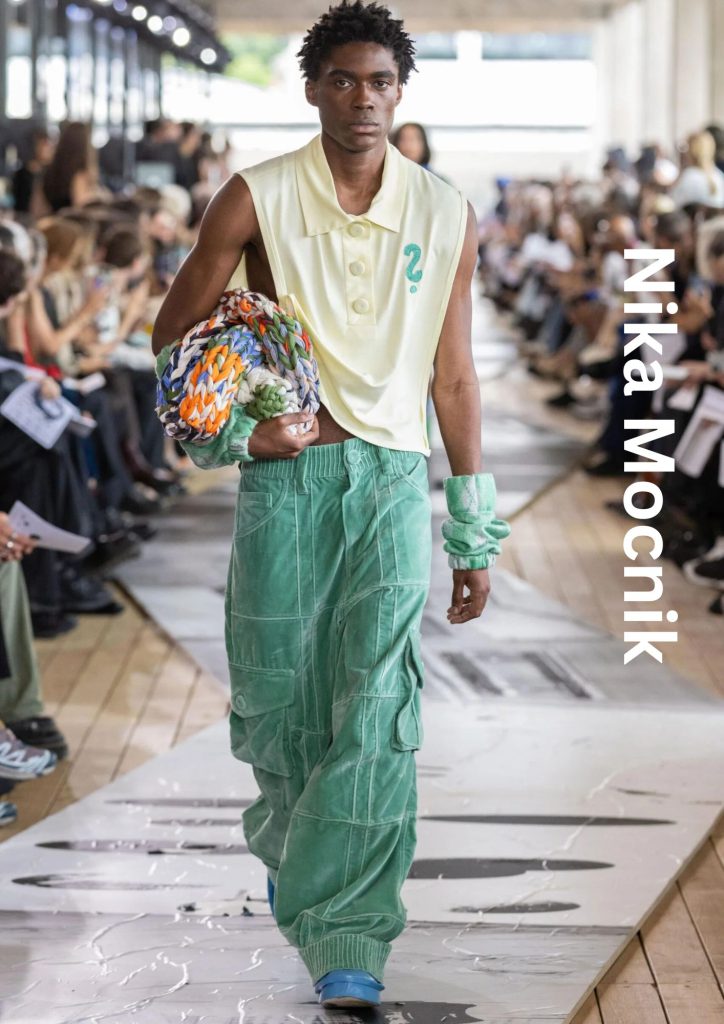
ALEXANDER LACQUE
Alexander Lacqua’s collection is inviting us to explore our emotions, our memories, our fantasies and our dreams that push the boundaries. “It is a mix of reality, made up of little things and childhood memories that make us dream and desire,” he says. Inspired by characters talking at a family meeting, he wants them to express experimental, surprising and sensual ideas – existing in a space where ideas diverge and words mingle. He revisited the idea of “banal clothing”, resulting in a collection where each piece has a different personal reflection on political and social dynamics. “The process began when I had to find the subject for my collection. The beginning was quite vague, I wanted to talk about many things at the same time without necessarily finding things that united them,” he says. At some point he realised one thing all his inspirations had in common: the emotions, the connection to human relationships and everyday life. That was the breakthrough moment. “It was as if since childhood, some questions finally had an answer and I wanted to address topics such as authority, marriage and sex,” he says. Of course, children have trouble understanding these topics, so he wanted to dissect them in a de-complexed family meeting, which served as the scene for his collection. In the end, each piece was made differently, just like an individual character. “By broadening our thinking, the clothes become carriers of ideas, artistic manifestations of my desire for a different world,” he finishes.
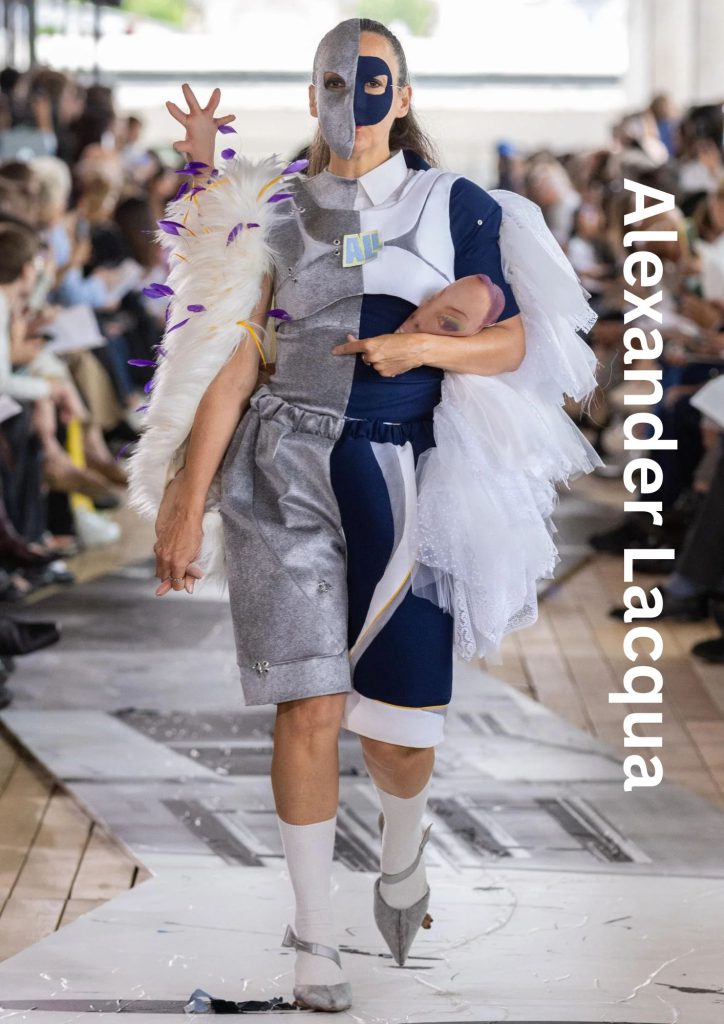
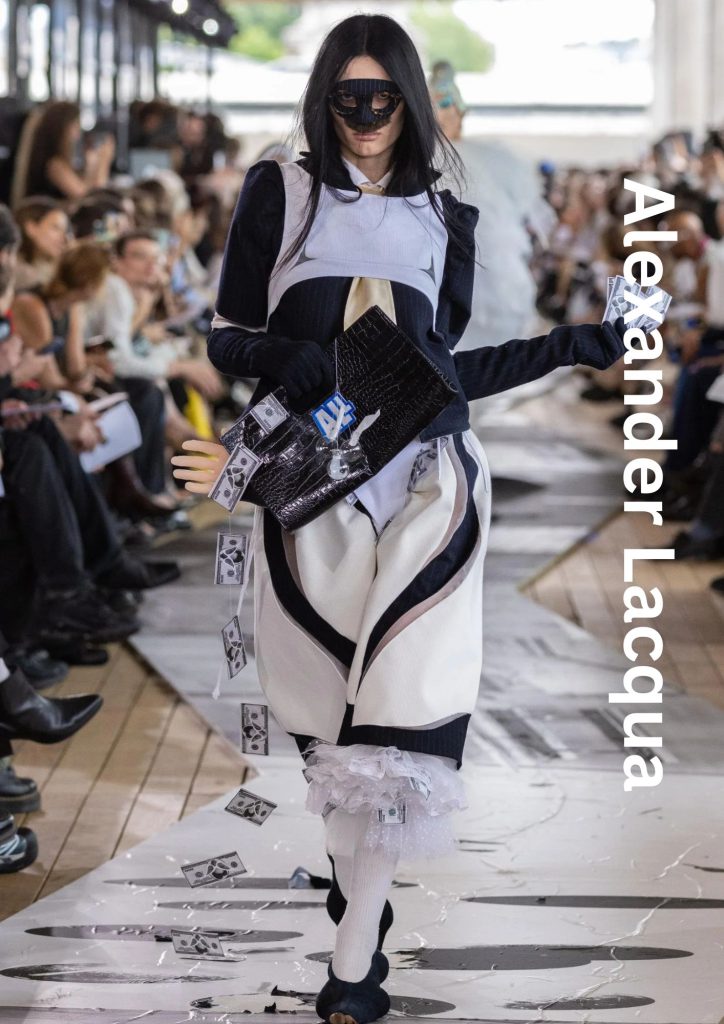
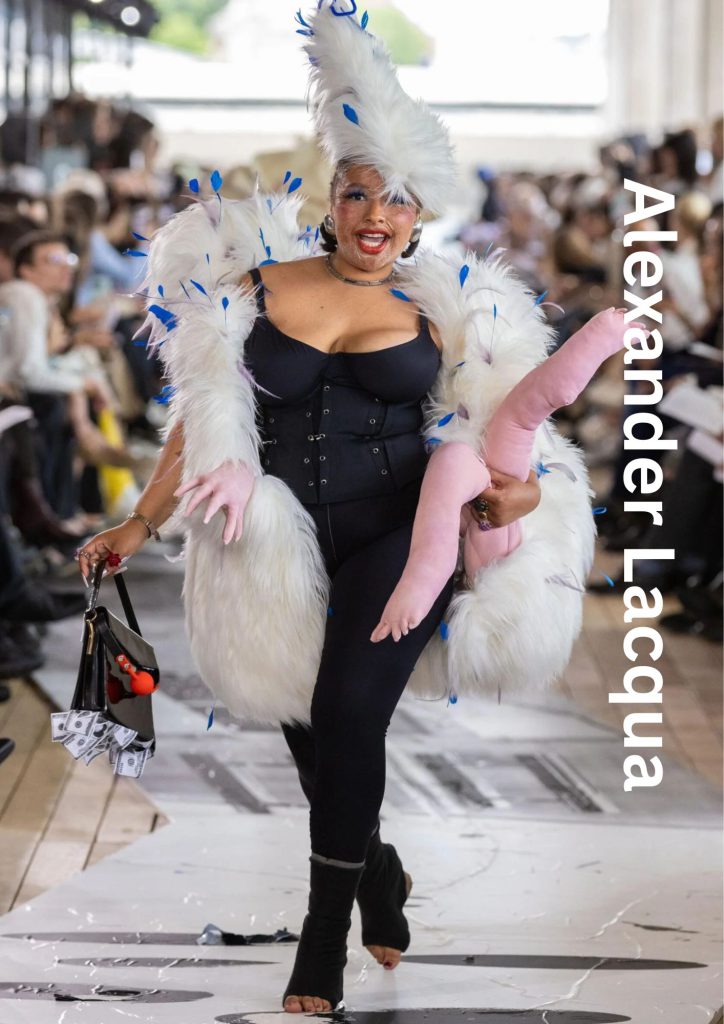
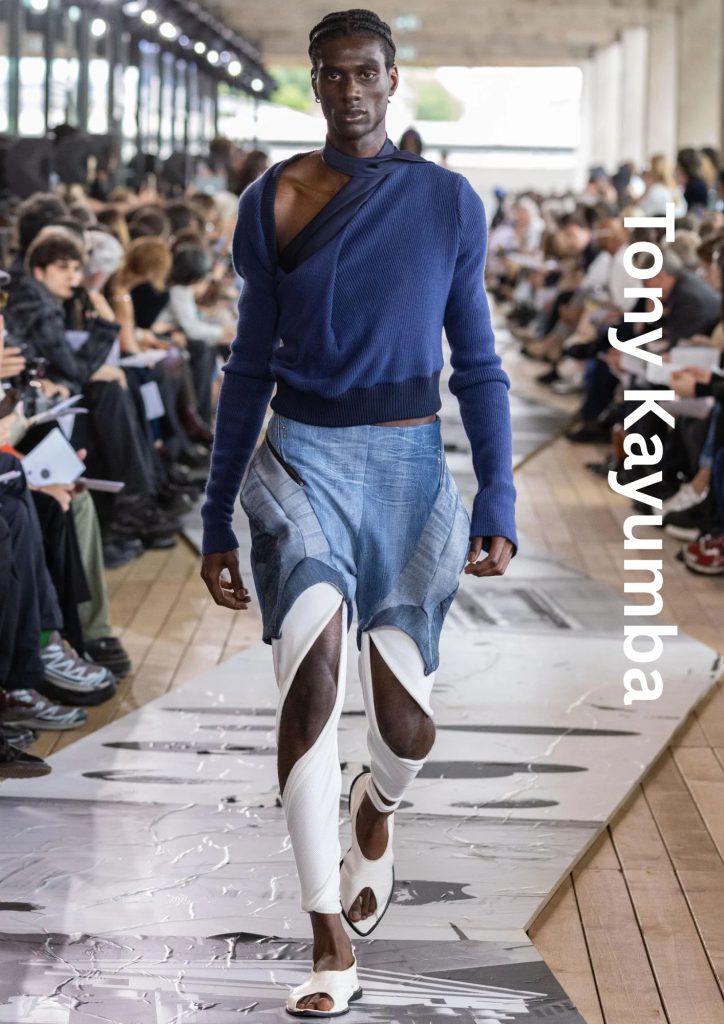
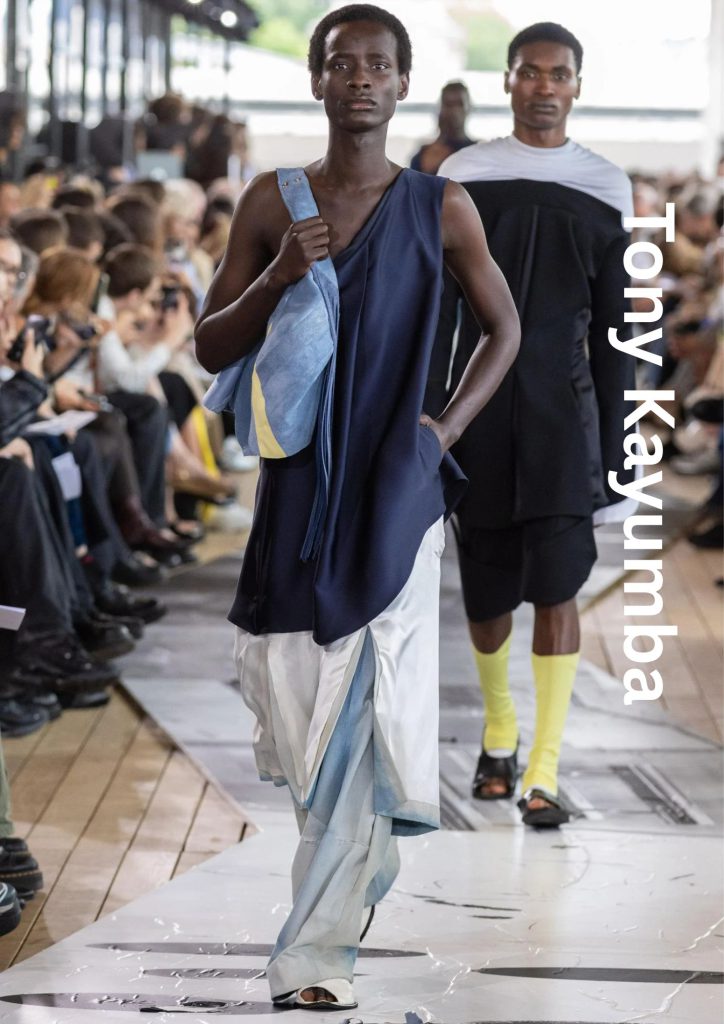
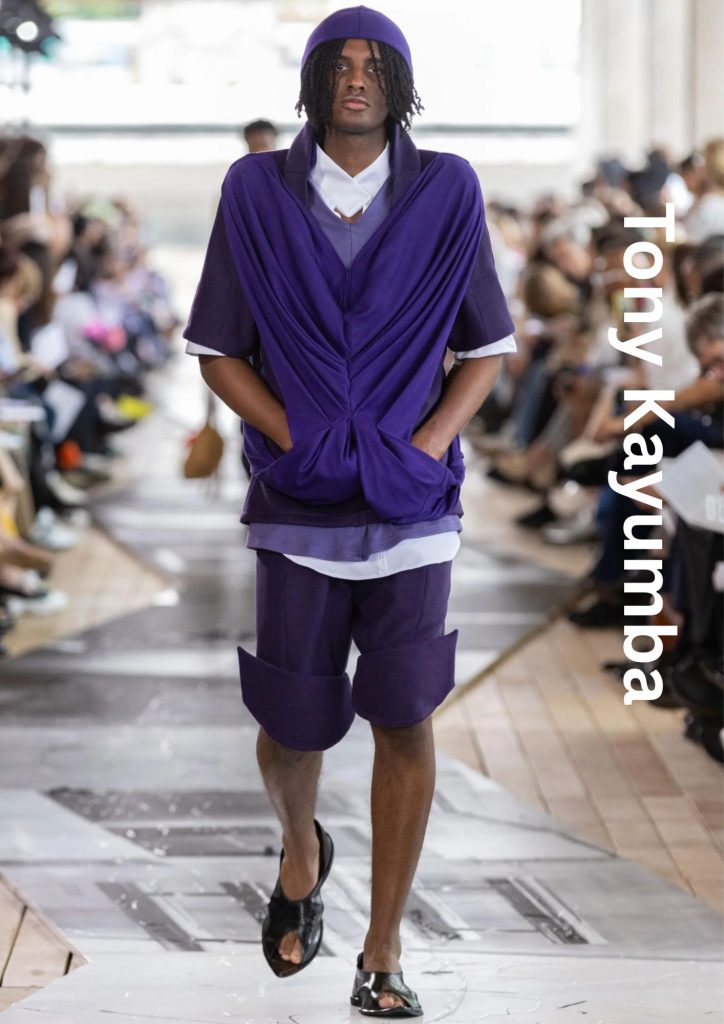
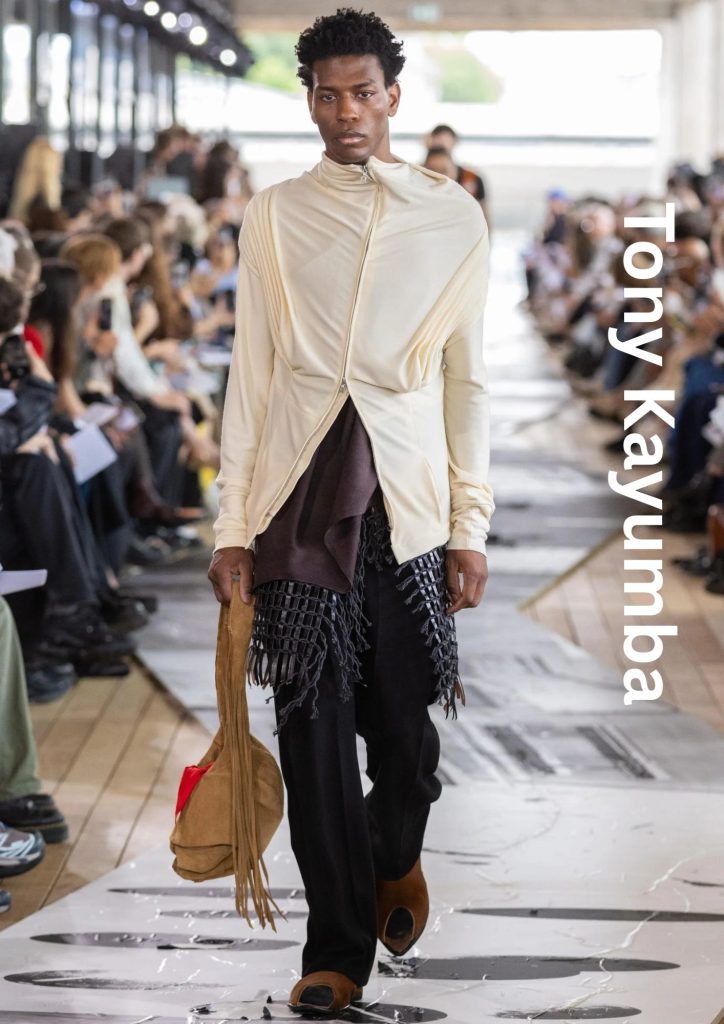
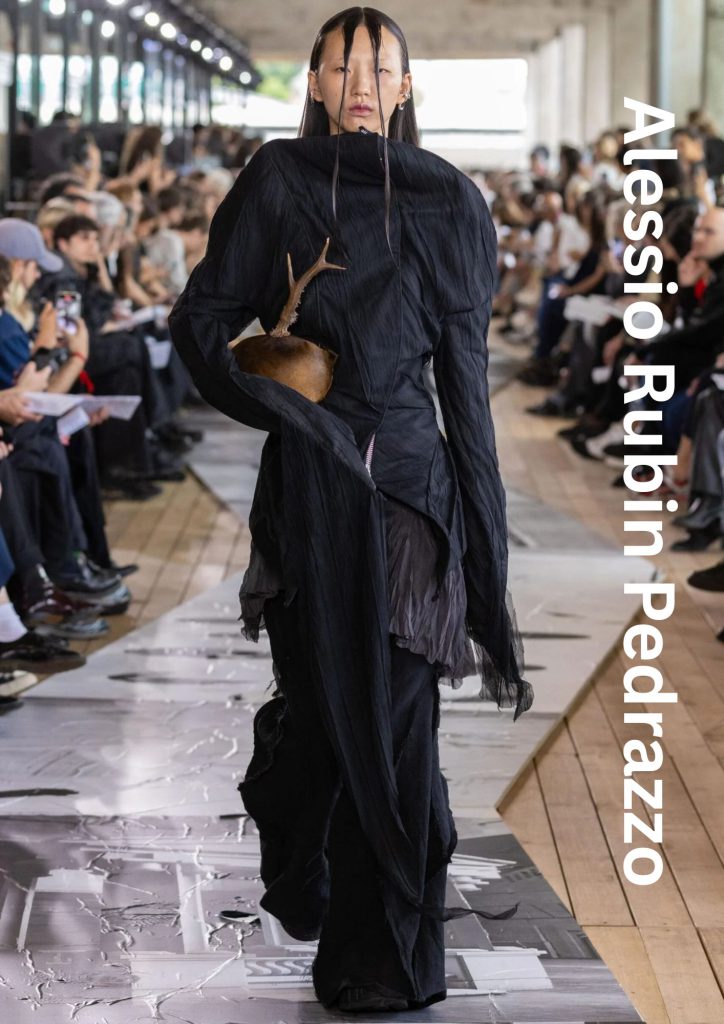
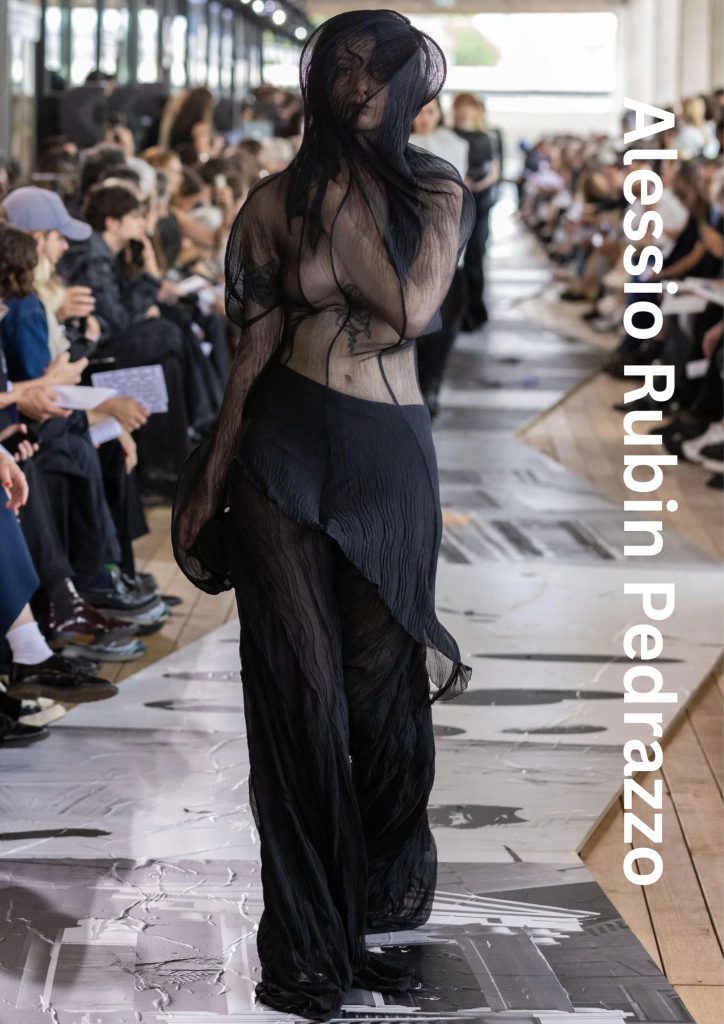
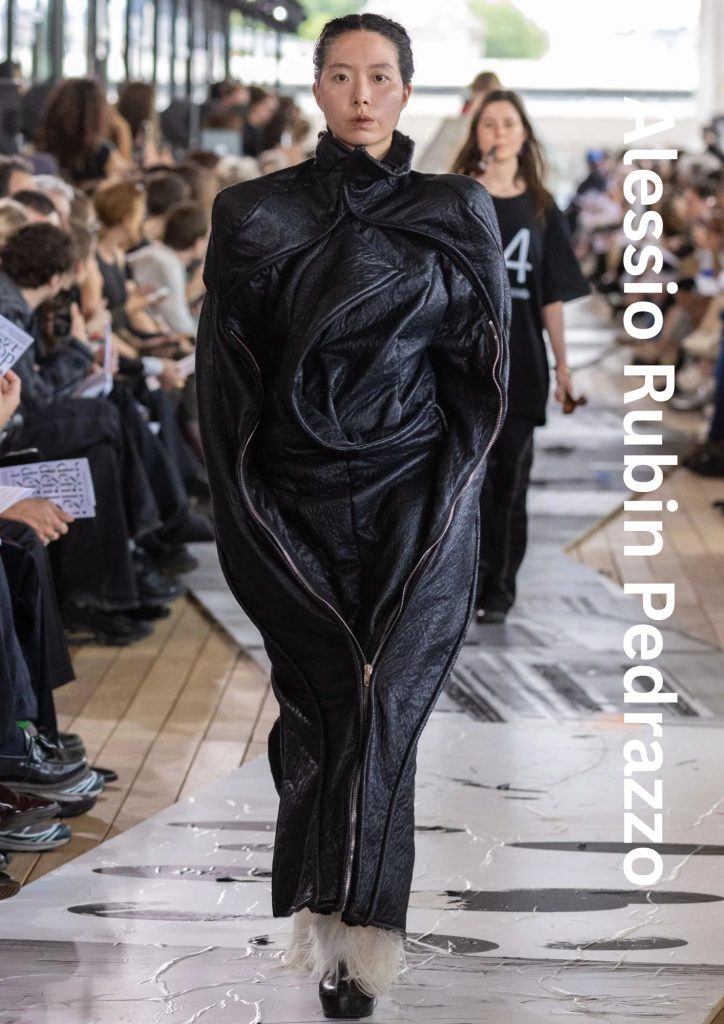
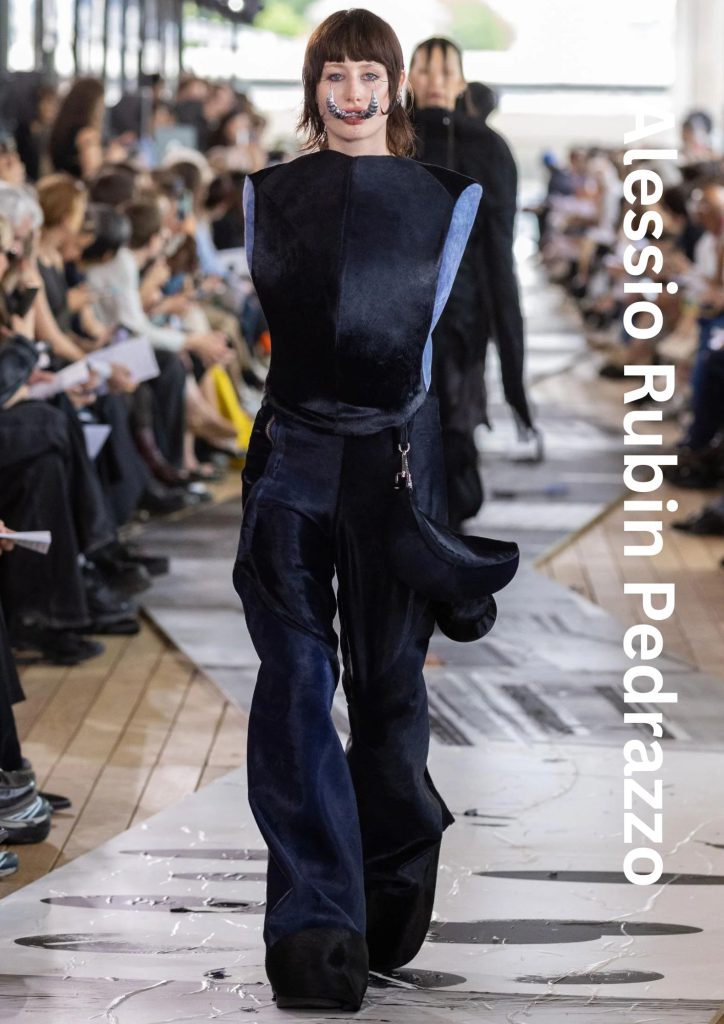
JEANNE GODIN
Looking at dualities, Jeanne Godin took inspiration from the double-meaning. Her collection expresses dualities in all its forms – being and appearing, the natural and the artificial. “It has been constructed as a humorous composition of synthetic elements in primary colours, such as balloons, and animals in parts,” she says. The us, as in the almost primitive part of the human being, was represented with animal-esque shapes made from furry materials. The positive side was expressed with colour and synthetic material through the medium of balloons. “With a sort of confusion between the two, like as if animals transformed into balloons,” she adds. For the balloon part, the thermos was very complex to use, since it is normally used in small shapes and not on textiles. “It didn’t stick to all fabrics, couldn’t be repaired, some materials wouldn’t fit on the sewing machine, so I had to sew a lot of pieces by hand,” she says. “I really had a hard time because of that but I am very happy with the result.”
